






Don’t put your identity into the hands of “just anyone.”
Vox gives you accurate & consistent brand execution for all of your franchise opportunities from national & regional, down to local touch points. We maintain the brand integrity that you’ve invested so much in.
We are the one-stop production agency for fast, accurate & replicable packages ensuring your standards in the field.











Annual Franchise Development Report researchers surveyed franchisors about lead generation, recruitment strategies, and more to keep franchisors updated on the best practices.

































The 2024 STAR Awards recognized outstanding franchises of all sizes, industries, and operational budgets for their lead generation and recruitment processes.
Teams of mystery shoppers knocked on the proverbial front doors of 92 brands to find out how quickly representatives responded to queries from first-time qualified prospects.
“How
The 2025 AFDR
Researchers
Making
CHAIRMAN
Gary Gardner
CEO
Therese Thilgen
EXECUTIVE VP OPERATIONS
Sue Logan
EVP, CHIEF CONTENT OFFICER
Diane Phibbs
VP BUSINESS DEVELOPMENT
Barbara Yelmene
BUSINESS DEVELOPMENT EXECUTIVES
Kry stal Acre Hope Alteri
Jeff Katis
EXECUTIVE EDITOR
Kerr y Pipes
MANAGING EDITOR
M. Scott Morris
Franchise Update Media hosts the 25th annual FLDC
“How do you keep franchisees engaged after the sale and before they open their first location?”
Proper planning serves franchisors and franchisees 59 Market Trends
MUMBOs offer a new pipeline 60 Growth Solutions
Hey, franchisors: Commit to explosive growth
62 International
Finding the right fit with international franchisees 64 It’s Closing Time
Franchise brands must be prepared to change
DIGITAL EDITOR
Kevin Behan
WRITER AT LARGE
Eddy Goldberg
CREATIVE DIRECTOR
Cindy Cruz
DIRECTOR OF TECHNOLOGY
Benjamin Foley
SENIOR WEB DEVELOPER
Matt Wing
WEB DEVELOPER
Don Rush
WEB PRODUCTION MANAGER
Juliana Foley
DIRECTOR, EVENT OPERATIONS
Katy Coutts
SENIOR SUPPORT MANAGER
Sharon Wilkinson
SENIOR SUPPORT COORDINATOR
FRANCHISEE LIAISON
Leticia Pascal
SENIOR GRAPHIC DESIGNER
Michael Llantin
VIDEO PRODUCTION MANAGER
Greg Del Bene
DIRECTOR, CUSTOMER EXPERIENCE
Chelsea Weitzman
CONTENT & MARKETING MANAGER
Taylor Williams SPONSORSHIP
Heather
CONTRIBUTING WRITER
Helen Bond
CONTRIBUTING EDITORS
Art Coley
William Edwards
John DiJulius
Keith Gerson
Evan Hackel Matt Haller
Alison McElroy Jack Monson
Sophia Giordano-Scott
Paul Wilbur
Article Inquiries editorial@franchiseupdate.com
Subscriptions
By the time we get to Q4 at Franchise Update Media, two words take the spotlight: franchise development. This issue explores the many facets of frandev. A number of stories flowed out of the Franchise Leadership & Development Conference (FLDC) in Atlanta, including Mystery Shopping, STAR Awards, and the first look at the Annual Franchise Development Report (AFDR). It’s all covered in this issue of Franchise Update magazine.
I should note that the 2024 FLDC was the 25th anniversary of the event. It’s a significant milestone for the conference and proof that franchise development practices and strategies are important to this industry.
The mystery shoppers went to work again this year and evaluated more than 90 brands, assessing their lead generation, recruitment practices, and overall industry best practices. Those who scored the best were recognized with STAR Awards for outstanding performance in franchise recruitment. This year, the award categories were updated to acknowledge excellence in franchise recruitment based on investment levels. You’ll find full coverage in this issue.
The AFDR provides a comprehensive overview of franchise lead generation and recruitment strategies. The report is based on a survey of franchisors that analyzes practices, budgets,
and perspectives on future business performance. The report looks to identify effective strategies and emerging trends in franchise recruitment. You can read more about the report and learn how to order a copy in this issue.
Elsewhere, we caught up with Tina BaconDeFreece, president and CEO of Big Frog Franchise Group, and Neil Gill, CEO and president of Dogtopia. Among other things, Bacon-DeFreece shared how the brand has continued to embrace technology, including a new e-commerce add-on to the brand’s website. Gill told us about the changes that have occurred since reinventing the Dogtopia brand in August 2015, including exponential comp and store growth and a thumbs-up from both franchisees and “pet parents.”
We also talked with Mary Ann Donaghy, chief marketing and customer experience officer at Zips Cleaners. She’s an experienced datadriven marketing leader, and she’s making a difference at the Maryland-based brand.
Everything else you expect to find in Franchise Update magazine is here between the pages. We hope you find this issue overflowing with information you can use to help grow your business and enhance your franchise development efforts. We’ll see you again in 2025!
Kerry Pipes
KERRY PIPES Executive Editor
Written by ANDREW SEID
In the world of franchising, two critical elements form the backbone of a successful system: franchisee recruitment and franchisee support. Often viewed as separate, these components are intrinsically linked. They influence and reinforce each other in a symbiotic relationship that can make or break a franchise system’s success.
Recruitment and support might seem like sequential steps in the franchising process, but they form a continuous cycle that drives the growth and sustainability of a franchise system. Effective recruitment leads to franchisees who are more likely to succeed with proper support. In turn, well-supported franchisees become brand ambassadors, attracting new potential franchisees and making the recruitment process smooth and effective.
When clients ask us how to avoid potential problems with franchisees, our best answer usually isn’t enforcement mechanisms or support opportunities. Instead, we point to the franchisee recruitment process. While franchising is a business relationship with terms dictated by legal contracts, the most effective franchisors rely on communication, trust, and culture to help navigate problems. Culture and trust begin with open and honest communication that starts at the beginning of recruitment.
We teach our clients to be straightforward and transparent with their franchisee candidates. We make sure candidates fully understand what the franchisee-franchisor relationship actually is. We clearly communicate what the expectations are and will be for both sides in the recruitment process and after the franchisee signs on. It helps to understand why certain decisions might be made if a franchisee understands that the franchisor’s prime responsibility is to protect, enhance, and promote the franchise brand as a whole. Open communication builds trust. Without trust, even the most successful consumer brands will fail as a franchise. Transparency serves multiple purposes:
• Attracting franchisees who understand and value the same things as the franchise system, ensuring a good fit from the start
• Setting realistic expectations for the franchise relationship, reducing future disappointments or misunderstandings
• Demonstrating the franchisor’s commitment to franchisee success, which can be a significant selling point
Truthful and educational recruitment messages are a foundation of trust and mutual understanding that will be crucial throughout the franchise relationship.
A robust support system can be one of the most powerful recruitment tools in a franchisor’s arsenal. That system of support helps take a qualified but inexperienced candidate and turn them into a knowledgeable and successful independent businessperson. Prospective franchisees often cite the level of support as a key factor in their decision-making processes. When existing franchisees validate that the franchisor offers exceptional support, they become living testimonials, easing the recruitment of new franchisees. Consider how support enhances recruitment:
• Success stories. Well-supported franchisees who achieve notable success become compelling case studies for recruitment materials.
• Word-of-mouth marketing. Satisfied franchisees are likely to recommend the franchise to others in their network.
• Validation calls. During the due diligence process, prospective franchisees often speak with existing ones. A strong support system leads to positive feedback during these conversations.
• Reduced failure rates. Effective support typically results in reduced franchisee failure rates, a strong selling point for risk-averse prospects.
Franchisee support should not be a one-sizefits-all proposition. Depending on class of franchisee (single unit, multi-unit, multi-brand, private equity, etc.), as well as the experience and time a franchisee has spent in the system, the type and level of support should change. The recruitment process provides valuable insights into each franchisee’s background, strengths, and areas for growth. This information should inform the support strategy for each new franchisee. Personalized support plans lead to:
• Efficient onboarding processes
• Targeted training programs
• Customized growth strategies
• Improved resource allocation for support teams
This tailored approach improves the effectiveness of support and enhances franchisee satisfaction, creating a positive feedback loop.
The relationship between recruitment and support evolves continuously based on the experiences of both the franchisor and franchisees. Establishing a robust feedback system that connects recruitment and support teams is crucial. This system should:
• Share insights from field support staff to refine recruitment criteria.
• Use recruitment data to anticipate support needs.
• Regularly assess the alignment between promised and delivered support.
• Identify trends that may require adjustments in both recruitment and support strategies. By maintaining this feedback loop, franchisors can continuously improve both processes, leading to a strong, resilient franchise system.
The relationship between franchisee recruitment and support is a complex, dynamic one at the heart of successful systems. By recognizing and leveraging the interconnections between these functions, franchisors can drive growth, improve franchisee satisfaction, and enhance the overall health of the franchise.
Effective recruitment sets the stage for successful support while robust support systems become powerful recruitment tools. When properly managed, this symbiotic relationship can lead to a thriving franchise network where both franchisors and franchisees achieve their goals. As the franchising landscape evolves, those who master the art of harmonizing recruitment and support will be best positioned to build resilient, growing franchise systems. By viewing these functions as deeply interconnected processes, franchisors can unlock new levels of success and create truly sustainable franchise models.
Andrew Seid is senior consultant at MSA Worldwide. Contact him at aseid@msaworldwide.com or 860-604-9189.
Written by DUSTIN MILLER
Golf has always been more than just a sport to me—it’s a way of life. From my early days as a head pro to my experiences as a teaching instructor and tournament player, I have seen firsthand how golf brings people together. It’s not just about perfecting a swing or shaving strokes off your game; it’s about the community that forms around the sport. Connections are made, and relationships built. This was the foundation on which I built Swing Bays, a place that combines the best elements of golf into one cohesive experience. It’s not just a facility; it’s a hub for golfers of all skill levels to practice, learn, and grow in a welcoming and supportive environment.
The idea for Swing Bays started with a simple dream: to create a place that goes beyond the traditional golfing experience. I envisioned a one-stop shop where the country club member and the casual weekend golfer could feel equally at home. As a PGA professional, I saw the need for an inclusive, approachable environment where golfers could play and also work on their fitness, receive tailored instruction, and benefit from club fittings—essentially, a place where golfers could improve their game and well-being in a holistic way.
In June 2022, we soft launched Swing Bays with minimal advertising and an emphasis on word-of-mouth marketing through my loyal
clientele. By September of that year, we officially opened our doors with a large launch. The first few months were dedicated to refining the customer experience and ensuring our staff embodied the unique Swing Bays culture built on warmth, camaraderie, and an unwavering commitment to customer service.
Launching an indoor golf facility in the wake of a global pandemic presented a unique set of challenges. The fear of the unknown—wondering how the public would respond to indoor spaces, particularly for a leisure activity like golf—was real. But I was fortunate to have a community of supporters who believed in the Swing Bays vision as much as I did. Their enthusiasm and trust gave me the energy to keep moving forward during uncertain times, and they’re the reason we’ve succeeded in building what we have today.
Swing Bays offers more than just golf simulators; it’s an all-encompassing experience. While many indoor golf centers focus solely on entertainment, Swing Bays differentiates itself by taking a more complete approach to the sport. We provide instruction to help golfers improve their skills. We also offer fitness programs designed to help golfers stay strong and healthy so that they can continue enjoying the game for years to come. Our club-fitting

services ensure that each golfer is using the equipment that’s best suited for their unique swing.
The fitness aspect of Swing Bays sets us apart. Golf is a physical game, and if you want to improve and increase your ability to play long term, fitness is key. That’s why we have Titleist Performance Institute-certified fitness instructors who work one-on-one with our members. We help golfers improve their physical strength, flexibility, and endurance so that their game improves holistically. The results show up in their swing mechanics and overall performance on the course.
At the heart of our business is a membershipbased model that focuses on fostering a community. Our members aren’t just paying for access to simulators or lessons; they’re joining a supportive network of fellow golf enthusiasts who are all striving to improve. We’ve designed Swing Bays to be a place where everyone, from beginners to pros, can come together, share their love for the sport, and grow as players. This family-like atmosphere extends to our staff as well. When you walk through the doors, you feel the difference immediately: Our team is passionate about what we do, and that energy is contagious.
As we look to the future, Swing Bays is poised to redefine the indoor golf experience. The demand for indoor golf facilities is growing and driven in part by the sport’s surge in popularity over the past five years. But it’s not just about growth for the sake of expansion. With Fransmart as a perfect partner for franchise growth the right way, we are committed to maintaining the core values that have made Swing Bays successful: community, inclusivity, and a passion for helping people play better, healthier golf.
Swing Bays will continue to evolve, but our mission will remain the same: to offer golfers a place where they can improve their game and become part of a supportive community that shares their passion for golf.
For golfers of all levels who want to get better, stronger, and more connected to the game they love, Swing Bays is the answer.
Dustin Miller is a PGA of America Golf Professional and founder of Swing Bays.
Smart Answering, our AI powered voice assistant, answers every call your franchise receives delivering consistent, accurate and on-brand responses to every caller, at every location 24/7. Also, you can ensure your AI assistant is trained with the latest information with our easy-to-use dashboard customized for your business. Before you know it, your AI assistant will become one of your most valuable employees.



















“I measure success by franchisee satisfaction, team productivity, and whether my team genuinely enjoys coming to work.”
Written by KERRY PIPES

President and CEO
Company: Big Frog Franchise Group/Big Frog Custom T-Shirts
Units: 76
Age: 52
Years in franchising: 16
Years in current position: 6
Tina Bacon-DeFreece has a Ph.D. in chemical engineering, but these days, she’s applying herself to the science of business.
Bacon-DeFreece is the co-founder, president, and CEO of Big Frog Franchise Group. Florida-based Big Frog Custom T-Shirts is a custom apparel franchise with 76 locations in the U.S. and Canada. Bacon-DeFreece, along with her husband, Ron, and their late partner, Leeward Bean, opened the first Big Frog in 2008 in Clearwater, Florida.
Bacon-DeFreece has been leading the company since 2016. She served as executive vice president and president before stepping into the CEO role in 2018 when Bean retired.
The brand has been laser focused on expansion, partnering with driven entrepreneurs to bring its custom T-shirts, promotional products, and community support to key markets nationwide.
“We will award 10 new stores this year, and I’d like to see us continue that pace in the coming years,” says Bacon-DeFreece. She says Texas and Georgia are key targets for expansion.
Under Bacon-DeFreece’s leadership, Big Frog is leaning into technology. Whether it’s the brand’s enhanced online design tool, innovative cloud-based point-of-sale system, or new e-commerce add-on to the website, there are multiple ways to move the needle and increase revenue. “Because our concept was founded on using the latest printing technology,” she says, “it is very natural for us to always be looking for better technology.”
What is your role as CEO? Fundamentally, my job is to add value to our brand. This means increasing revenue, improving operational efficiencies, and growing our brand.
How has Covid-19 affected the way you have led your brand? Covid-19 taught us that open communication is critical to effective leadership and planning. To this day, we do regular biweekly video updates to our system. We also try to showcase all the little wins stores experience as often as we can. We learned that keeping morale up and optimism were key to continued growth.
Describe your leadership style. I try to empower employees and not micromanage their daily routines. I try to get out of their way so that they can do their jobs. At the same time, I make sure they have the resources to do their jobs. I try to be hands-off and let them use their expertise to better Big Frog.
I prefer to have a culture where we are a true team. Silly little things like refrigerator clean out can involve everyone from our office manager to our VP of operations. My door is always open, whether it’s for a dad joke or to strategize with our newest marketing team member over Instagram.
What has inspired your leadership style? I’ve read some leadership books, but I’ve learned a lot from my corporate jobs prior to Big Frog. I remember how I wanted to be treated in the workplace, and I tried to incorporate that into how we run Big Frog. My business partner, Leeward Bean, who has since passed, was an amazing mentor, and he created an amazing foundation for the Big Frog culture that I hope I’m doing justice to.
What is your biggest leadership challenge? Because I am a founder of the company, I tend to interject myself into some of the initiatives. I enjoy strategic planning for growth, but I also enjoy some of the bootson-the-ground activities that can distract me from some of the higher-level activities. I am working on this, but it’s definitely a fault/ guilty pleasure.
How do you transmit your culture from your office to frontline employees? Slack has been a great tool to inject some of our home-office culture out to the remote team members. Our controller loves his dad jokes. We’ll do holiday contests, and we keep each other up to date quickly and easily on accomplishments. It was especially helpful during Hurricane Helene to do quick checkins. Our annual convention is also a great time to catch up and keep propelling our core cultural components to our corporate team and the franchisees.
How can a CEO help their CMO develop and grow? It’s important to stay on top of industry trends and services by attending conferences, networking, and even attending solution-provider webinars. Not to be cliché, but knowledge is power, and the person driving brand growth should know what works and what doesn’t.
Where is the best place to prepare for leadership: an MBA school or OTJ? As someone who didn’t get an MBA but did get a Ph.D., I would be a hypocrite if I didn’t acknowledge the value of a focused educational degree. The wealth of knowledge that we have at our fingertips has never been greater. There are amazing podcasts, books, TED Talks, etc. where you can learn what leadership is and be inspired by great leaders you admire. I think if you’re prepared to put in the time, OJT is as effective as school, but you have to commit to listening, observing, and learning from other great leaders via mentorship or research. Are tough decisions best taken by one person? How do you make tough
decisions? I am very empathetic, which I believe is a great strength. However, when making tough decisions, I like to run my thoughts past trusted people. I’m fortunate to have an incredible board of advisors as well as team members with comprehensive backgrounds in operations and franchising. Brainstorming and parsing out the pros and cons in these situations really makes the final decision the best one we can make.
Do you want to be liked or respected? I would much rather be respected. The need to be liked dissipated in my late 20s, but the need for people to respect my knowledge and expertise is important. I don’t think I can be a good leader if people don’t respect me.
Advice to CEO wannabes: Find a mentor if you can. I’ve had amazing mentors in my life. You don’t need to take all their advice, but they give you perspectives that you can’t possibly have yet. Absorb all their life experiences and use that to formulate the type of leader you want to be.
Describe your management style: For my management team, I am hands-off and check in a few times a week to see how things are going. For other team members, I like to play more of a mentor role, where I empower them to think for themselves. We have a few young team members where this is one of their first jobs, and it is fun to watch them learn how to make decisions, set their own goals, and work through problems.
What does your management team look like? We’re a small team with 18 people on board. We have six senior team members handling operations, marketing, accounting, learning and development, and franchise development. They have regular meetings with their teams as well as cross-departmental meetings. How does your management team help you lead? I count on them to keep their employees inspired and represent the culture we’ve cultivated over the years. We want our employees to be fulfilled, happy, and proactive but not burned out. It can be a challenge, and they need to alert me when we have team issues.
Favorite management gurus: Do you read management books? Ironically, one book that I think everyone should read is Eat That Frog by Brian Tracy. It has inspired me to tackle those unpleasant tasks quickly and get them off my plate and out of my mind. Start With Why by Simon Sinek was one of
the core principles we’ve used at Big Frog. As a military brat, I really enjoy the various military leaders, including Admiral William H. McRaven, Captain D. Michael Abrashoff, and a variety of Navy SEALs, including Jocko Willink.
What makes you say, “Yes, now that’s why I do what I do!”? When I see franchisees hit their goals, whether it’s sales, profits, or a European vacation, I am ecstatic for them. I love seeing how they grow as entrepreneurs and leaders.
What trends are you seeing with consumer spending habits in your stores? The summer was a bit slower than we expected this year. If we look at trends over the past 12 years, it appears that consumer spending in our case decreases during election years. We have seen a nice uptick heading into the fall months, however.
How is the economy driving consumer behavior in your system? When inflation was at its peak, we did see more careful spending by our business customers. This has improved, but the time for closing deals has increased.
What are you expecting from your market in the next 12 months? While this year has been somewhat flat overall in terms of growth, we are hopeful that consumer confidence will increase over the next few months. Having a resolution on the election and, hopefully, continued cuts by the Federal Reserve on interest rates can boost spending.
Are your franchisees bullish or bearish about growth and adding additional units? Overall, the franchisees are excited about the growth of the number of stores this year. We have some fantastic new additions to our system.
Are commodity/supply costs any cause for concern in your system? Garment production and delivery are critical pieces of our garment decorating process. Events, like floods or droughts in India, can affect cotton production, and this can increase our base cost of garments by as much as 20% and can cause shortages. When there is a UPS or dock worker strike, products can’t be delivered on time, and this causes shortages and upsets our customers. We have a short turnaround brand promise, and this impacts it severely. The dock worker strike that happened in early October may make sourcing products very difficult heading into the holiday season.
How much influence does your IT department have on your brand? We don’t necessarily have an IT department, but we do stay on top of technology itself.
How have your company’s tech tools changed over the past five years? Last year we implemented a new cloud-based POS system (over an old desktop version) that allows us to be more flexible than before and perform quoting and sales in the field. It also allows us to have real-time access to support and assess KPIs in the field. Very exciting for us.
How does technology influence your decisions? We are still a relatively small organization and franchise system, so we look at any affordable technology that can make our lives easier. By easier, I mean efficiencies, project management, communications, operations, and marketing. What can we afford, and how will it move the needle for our stores or franchise development?
Are you using AI? How? We are in the middle of a project with a consulting group that is doing a preliminary study on how we can use AI to improve efficiencies at the store. Our goal is to make the store easier to run and possibly with fewer personnel. At the franchise group level, we are using AI in marketing, communications and learning, and development and training.
How do you measure your ROI on technology investments? Obviously, increased revenue generation is a huge KPI for us, but the degree of system adoption is the primary ROI we go by. If the franchisees are consistently using it and they are seeing improvements in their stores, then that is a win for us.
How did/do you create a culture where use of technology advancements is welcome and used? We introduced a new printer two years ago after testing at the home office, and it was eagerly embraced. We tell our franchisees our concept emulates “Jetsons in the Jungle”—high technology combined with green and environmentally friendly processes and ambience.
What time do you like to be at your desk? I’m usually at my desk by 8:30 a.m. And I usually don’t leave my office until 5:30 p.m.
Exercise in the morning? Wine with lunch? I wake up at about 5 a.m. and work
out in our home gym and then grab a cup of coffee and sit on the back patio with my dogs and let the chickens out in their yard. I enjoy that quiet time before starting the day. Do you socialize with your team after work/outside the office? Many people on our team are good friends, and we try to do fun things now and then. I do enjoy hanging out with the team.
Last two books read: I’m currently reading The Lost City of the Monkey God by Douglas Preston. I have a love for ancient history and archaeology. The other book I just revisited was Traction by Gino Wickman because a franchisee sent me a copy.
What technology do you take on the road? For short trips, my phone and Kindle for reading. For longer trips, my laptop too. It’s amazing what you can accomplish on your phone these days.
How do you relax/balance life and work? We try to plan at least two one-week vacations a year. I’ve started trying to take one Monday off a month to go fishing with my husband. I find that if I don’t book it, then I don’t do it; it all goes right into my Outlook calendar.
Favorite vacation destination(s): We’ve enjoyed cruising in the past few years. I enjoyed visiting the English Isles last year. The Isle of Man and the Shetland Islands were so remote, and it was such a treat to visit them in my lifetime.
Favorite occasions to send employees notes: When they’ve completed some project that I know required extra time and effort. I really appreciate their dedication and want them to know that. We also do celebrations for engagements, baby showers, and birthdays— the usual fun things.
Favorite company product/service: I love a good glitter vinyl. The vinyl lasts forever on the shirt and really pops. I have shirts that are 10 years old that still look fantastic.
What are your long-term goals for the company? Over the next three years, my goal is to add another 50 stores and grow our stores’ revenue by double digits.
How has the economy changed your goals for your company? Covid-19 definitely had an impact on awarding new stores, and it set us back a few years. We devoted all our energy and budget to helping our stores
stay afloat. They bounced back nicely, but it did affect our plans. Currently, the economy caused single-digit growth this year, but we have awarded seven new stores so far this year, so we’re very happy about that.
Where can capital be found these days? We’re lucky we have an excellent relationship with our local community bank. I recommend that everyone find a local bank that cares about growing their business. We’ve nurtured this relationship for 10 years, and it has paid off.
How do you measure success? I personally measure success in three ways: franchisee satisfaction, team productivity, and whether my team wants to come to work—I don’t ever want to hear that they dread coming in.
What has been your greatest success? On a personal level, I feel my professional growth over the past 15 years in this business is what I’m most proud of. I’ve worked hard on trying to grow as a person, co-worker, and leader and keep my priorities straight.
For Big Frog, it’s really the amazing growth of our system. We never predicted that our stores could generate so much revenue and profit for themselves when we started this 15 years ago, and they are killing it. It’s very exciting, and I’m proud that our team and systems are a big part of that.
Any regrets? Personally, my biggest regret is that when my business partner, Leeward, was ill during Covid-19, we didn’t insist on going to see him. He ended up passing away very suddenly that July, and it was devastating for all of us. Life is short, and don’t assume you have tomorrow.
I will tell you my consistent regret is when I know someone on the team isn’t a good fit any longer and I take too long to let them go. Our team becomes like family, and it’s really hard to make those decisions. But keeping them on can be demoralizing for the rest of the team, and we’ve seen that happen a few times. I really need to make those hard decisions sooner.
What can we expect from your company in the next 12 to 18 months? We expect to add another 10 to 15 units to our footprint. We are also planning to launch a brand-new e-commerce component to our website in the first quarter. That should create additional revenue streams for the stores. We’re still hashing it out, but we’re very excited.


“Health and wellness are one of the biggest changes I have seen in the industry in the last three years.”
Written by KERRY PIPES

NEIL GILL CEO and President
Company: Dogtopia
Units: 275
Years in franchising: 35
Years in current position: 9
Neil Gill is a franchising entrepreneur who has spent more than three decades in leadership roles with KFC, Pizza Hut, Brinker International, and Gloria Jean’s Coffee, where he was CEO for more than a decade.
But in 2015, the Australian native was looking for something new. He was in search of a franchise space that wasn’t overdeveloped and offered growth potential. He says he zeroed in on the pet sector, a growing multi-billiondollar space.
Today, he is CEO and president of Dogtopia, a Phoenix-based premium dog daycare, boarding, and spa brand with more than 270 locations in North America. As Gill explains, it’s a brand that is redefining pet care.
“Since we began reinventing the Dogtopia brand in August 2015, we have experienced exponential comp and store growth with positive feedback from our franchisees and pet parents alike,” Gill says.
Dogtopia resides in a good place. The global pet market is worth more than $320 billion and is projected to reach $500 billion by 2030. That offers ample room for growth for the brand, and 2024 has been a prime example.
“We will open 30-plus stores this year,” he says.
Gill isn’t content to rely on a growing market and an expanding portfolio of franchise locations; he’s looking to capitalize on a changing market as well.
“Health and wellness are one of the biggest changes I have seen in the industry in the last three years,” he says. “In addition, people are traveling with their dogs, so we have seen a further shift from boarding into daycare, which we predicted eight years ago.”
You might say Dogtopia is experiencing a dog’s life. Dogs receive enhanced levels of wellness care that benefits both them and their humans while franchisees reap the rewards of a profitable franchise model.
What is your role as CEO? My role as CEO is to define the long-term strategy with our board of directors and management team. Together, we establish the business plan and detailed initiatives to deliver on both the longterm and short-term needs of the business and our franchisees to ensure we remain the leaders in the category and in our respective markets.
How has Covid-19 affected the way you have led your brand? As consumers have become more comfortable and much more reliant on convenience offerings, like home delivery, online streaming, Uber, etc., we’ve had to pivot our key consumer touchpoints to be more convenient. As a result, we’ve worked to remove all barriers to entry to make doing business with us as simple as possible so that we can meet the demands of our current and prospective dog parents.
Some of our convenience-type offerings include curbside pickup and drop-off, a mobile
app to aid in scheduling and webcam viewing, 3D tours of our locations, an interactive Dogtopia virtual world, and spa products available on Dogtopiashop.com or Amazon so that parents can bring the experience home.
We’ll continue to refine the way we do business. In fact, we’re in the middle of reviewing the requirements of a key and long-standing process of dog entry and evaluation, a process that has been unchanged across the industry for more than 22 years. As the largest operator in pet wellness, it is our responsibility to drive change and streamline some of the antiquated processes while retaining the highest quality of care for dogs to exercise, socialize, and learn. The health and overall wellness of our dogs are always our key priority.
Describe your leadership style. A rock in my shoe. While I appreciate what we have achieved to date, I always have a burning desire to improve, to find that next opportunity, to be better. It’s a constant chase (pun intended) to set the absolute highest standards for the industry and play to our full potential, which is one of our values. I believe every great business builder lives comfortably with a rock in their shoe. They’re still capable of running forward but never 100% comfortable with where they are!
What has inspired your leadership style? My innate desire and motivation to see people learn, grow, evolve, and succeed in business. It is one of the things that I love about franchising. The franchise model, when managed well, allows the creation of entrepreneurs in an environment with proven guardrails.
What is your biggest leadership challenge? I have high expectations, and at times, that can seem unreasonable to some people. My goal is to create an extraordinary brand, and that takes sacrifice and determination. When building a team, it’s important to make sure you’re all aligned and the people on the bus are prepared for the long journey. During interviews, people often say, “Tell me about work-life balance,” and I tell them, “I cannot answer that for you as it is so personal, and it depends on how much you love what you do.” I can’t define for other people where life intersects job and job intersects life. To me, they are one and the same, and we all have a responsibility to manage both. If you’re asking this question, you haven’t found something you truly love doing.
How do you transmit your culture from your office to frontline employees? It all starts by setting the example. You must be
on the front line with your teams, and that includes franchisees. If you’re not constantly reminding people of what you do and why, you’ll lose the culture. This includes regular store visits, in-person workshops, conferences, in-person training, digital webinars, training sessions, and, sometimes, simply having a meal together. I think we are all nicer people when breaking bread together.
How can a CEO help their CMO develop and grow? Understand their role and challenges, define the strategic intent and messaging of the brand and its offerings, set united goals with clearly defined outcomes, provide the resources to achieve the goals (team, agencies, consultants, and capital), and get out of the way so that you don’t slow them down.
Where is the best place to prepare for leadership: an MBA school or OTJ? There is no better way to prepare for leadership than by immersing yourself in business and managing teams across all walks of life. Always keep an open mind, be an avid reader, and constantly explore successful and unsuccessful businesses as you learn from both. Regardless of age, we are always learning and gaining knowledge. Education is key as it prepares and wires your mind to learn. It is the fastest way to improve cognitive capability. Find people you can trust and respect and understand that you’re only as good as the people you surround yourself with.
Are tough decisions best taken by one person? How do you make tough decisions? The leadership team should make decisions together. There is no such thing as a tough decision when it’s the right decision. The tough part is getting to the right decision. Do you want to be liked or respected? Respected.
Advice to CEO wannabes: Choose a sector or industry that is in growth mode, ensure that you can be passionate about it, be well capitalized, find the best people you can afford at the time, create a plan and budget, get buy-in from all stakeholders, execute the plan, and manage to your budget.
Describe your management style: I like to understand how things work, so I like to be involved. I don’t like surprises, so keep me informed, and once we have developed mutual trust, I get out of the way with one caveat: deliver. I also believe that every challenge has a solution. You just need to surround yourself with people smart enough to solve the puzzle.
What does your management team look like? A group of pragmatic, intelligent individuals who are committed to the cause.
How does your management team help you lead? Trust. They keep me grounded, tell me what I need to know, and help me manage the greater team, the business plan, and our budget. Remember: You’re only as good as the people you surround yourself with.
Favorite management gurus: Stephen Covey, Jim Collins, and Gallup Inc.
Do you read management books? The best business book I have ever read is Great CEOs Are Lazy: How Exceptional CEOs Do More in Less Time by Jim Schleckser. And of course, Jim Collins’ Turning the Flywheel is a favorite. We use this book as prereading for our planning sessions, and we applied its principles to establish the Dogtopia Flywheel.
What makes you say, “Yes, now that’s why I do what I do!”? Two things: When I get to spend time with our franchisees and when I spend time in stores talking to our parents. When I spend time with our franchisees, especially in training, I’m always reminded of the importance of our role at the support office. They rely on us to deliver on the strategy, to maintain our leadership position, and to be their support and motivation. We also provide the systems, tools, and processes to successfully run their businesses. When I spend time with our parents, it is extremely rewarding to hear how Dogtopia daycare has changed their dogs’ lives, and it’s always a different story.
What trends are you seeing with consumer spending habits in your stores?
Parents are becoming far more concerned for the health of their dogs than in the past, so we focus on the six attributes for healthy lives and the development of our range of wellness products. It is interesting to think that Dogtopia sees a dog so often that we do have a genuine impact on their overall health and wellness through exercise, socialization, and general education of dogs in the playrooms. There is no doubt dogs are now influencing human decisions. This is a concept that we have named “Dogification of the Human,” and the leaders of the pet industry understand this change. How is the economy driving consumer behavior in your system? The increase in experiential spending (concerts and travel) has seen parents travel with their dogs, which has contributed to a shift in spending toward daycare and away from boarding. The trend is
great for Dogtopia. Fortunately, our focus on regular dog daycare continues to drive positive daycare growth and improve the health of the dog with every visit. We also believe the design of our new wellness product range will connect well with parents.
What are you expecting from your market in the next 12 months? I’m expecting dog parents to further embrace the need for dog daycare regularly as they have the importance of exercise, socialization, and education for human children. Dogtopia is perfectly positioned to provide parents with a holistic wellness offering, from daycare benefits to the new range of spa products that are available on Amazon and Dogtopiashop.com.
Are your franchisees bullish or bearish about growth and adding additional units? While the higher-interest rate environment has slowed development, we are confident that the Fed rate cuts will give our franchisees more confidence to invest further. We have also taken the past two years to refine the store model. The most recent changes have improved the efficiency of the store footprint by 21% and reduced CapEx by more than $100,000. The team is always looking at how to improve ramp and reduce CapEx with the constant goal of accelerating ROI. If you can achieve this and get lucky enough to ride some macro tailwinds, we all get bullish about growth.
Are commodity/supply costs any cause for concern in your system? Yes. We have developed our own supply chain, which helps manage global purchasing for most aspects of our locations. We want to ensure the best quality product at the best possible price for our franchisees. We took control of supply more than two years ago so that we could better manage these headwinds and leverage our scale through better buying power.
In what ways are political/global issues impacting the market and your brand? From a macro perspective, most businesses today are facing a range of headwinds that have simply slowed business initiatives. I believe our management team has done a great job in countering these headwinds with innovative solutions to reduce costs and generate leads to our stores.
How much influence does your IT department have on your brand? The IT team is pivotal to parent connection and
engagement while maintaining synergy and brand support. We are in the process of launching an entirely new tech platform to better drive this parent connection.
How have your company’s tech tools changed over the past five years? Entirely!
How does technology influence your decisions? It’s important to understand that today’s consumers use technology as their first touchpoint with your brand. That interaction must be flawless. It needs to be as smooth, simple, and sophisticated as possible. It also needs to be genuine and transparent. If it’s not, they will abandon you.
Are you using AI? How? Yes, we use AI to aid in content development, predictive analytics, data analytics, and chat support within our technology platform to name a few.
How do you measure your ROI on technology investments? We’ve invested heavily in our technology stack and expect an ROI over the next five years. We see it simplifying operations, lowering the cost of parent acquisition, aiding in better retention, and improving workforce management. This return on investment will benefit both the enterprise and our franchisees by improving single-unit economics. How did/do you create a culture where use of technology advancements is welcome and used? We’re still working on it. We work on it every day. It’s a culture that we are constantly promoting and reminding all stakeholders that change is necessary.
What time do you like to be at your desk? There is no such thing as a desk anymore. If you have a device in your hand, you’re connected, you’re thinking, you’re growing, and you’re working. That’s why you have to love what you do.
Exercise in the morning? Wine with lunch? Exercise in the evening. I frequently skip lunch and eat a late dinner with my wife. Do you socialize with your team after work/outside the office? When I do, it’s normally to catch up with franchisees or during a planning session. I believe you can achieve both work and life coming together.
Last two books read: Great CEOs Are Lazy by Jim Schleckser is the best business book I’ve ever read. Turning the Flywheel by Jim Collins is another favorite. I constantly revisit his range of books.
What technology do you take on the road? Laptop, cell phone, and Fitbit.
How do you relax/balance life and work? Spending time with my wife. We exercise and walk together. We enjoy traveling, kayaking, riding bikes, and getting out in the garden.
Favorite vacation destination(s): Italy and Sydney, Australia.
Favorite occasions to send employees notes: When they’ve exceeded expectations.
Favorite company product/service: Dogtopia for love, Mercedes-Benz for quality, Amazon for convenience, and Apple for simplicity.
What are your long-term goals for the company? To be a genuine wellness company for both the dog and the parent that really changes lives while developing successful entrepreneurs through a profitable franchise model.
How has the economy changed your goals for your company? It has forced us to become more innovative, think more about the convenience proposition, invest more in technology, and think harder about our people, the structure of our team, and our skill sets.
Where can capital be found these days? We’re fortunate to have built a robust balance sheet that allows us to self-fund, and we have very good relationships with banks for franchisee funding.
How do you measure success? Ask yourself these three questions every day:
1. Are you delivering on what you said you were going to do?
2. Do you still enjoy the journey?
3. Are the people around you growing?
What has been your greatest success? We’ve built Dogtopia as the world’s leading and largest dog daycare brand.
Any regrets? No, I don’t believe in regrets, only learnings.
What can we expect from your company in the next 12 to 18 months? Many, many things. We’re forging forward with beneficial technology and convenience at the center of everything we do and continuing to build a genuine wellness brand for both the dog and the parent through leading-edge services and products.

Consolidate critical tasks into one easy-to-use interface. Your franchisees are going to you.
















Get quick, relevant answers from your franchise’s knowledge base, powered by advanced AI. Find what you need in seconds.








Unify essential tasks — including onboarding, training, new location openings, and more.
Enable real-time communication and collaboration across your locations.
Streamline system-wide reporting and compliance management.
The result? Effortless Ops management that transforms your franchise.
Using Delightree has been a game-changer for our franchisees.
Jorge Barragan CEO, The Picklr



















Written by MATT HALLER
This fall, less than two months before an intense presidential election, more than 350 franchisees, franchisors, and suppliers took time out of their busy schedules to descend on Washington, D.C., for the International Franchise Association’s (IFA) annual Advocacy Summit. This is the one time a year that members of the entire franchise community take their priorities and concerns directly to those who pass federal laws that impact their day-to-day business. More importantly, they share their stories personally with the people who need to hear them.
This year, there has been no shortage of topics in Washington with a significant impact on franchising. Indeed, in the lead-up to the election, franchising made major national news with Vice President Kamala Harris touting her time working at McDonald’s. It’s telling that both parties want to be associated with such an iconic brand, and I highlighted in the Wall Street Journal the ways that lawmakers and candidates should use this moment to proactively support our business model and change course from some of the harmful policies of the past.
Just as franchising knows no political bounds or allegiance, policies that promote the continued growth and fair treatment of the business model have and will continue to enjoy support from both political parties.
Atop that list, and a continued priority at the Advocacy Summit, is lingering uncertainty around the future of joint employer. With this spring’s bipartisan vote on H.J. Res. 98 to overturn the National Labor Relations Board’s (NLRB) expanded joint-employer rule, the entire Congress—for the first time ever—went on record either for or against our most critical issue.
After the vote, we thanked our champions who stood with us on joint employer and expressed our disappointment with those who
chose a different course. We expanded these efforts through the Coalition to Save Local Businesses organization with advertisements educating constituents about this issue. Our message has been clear and unequivocal: Should the NLRB implement an expanded joint-employer standard, the franchise model and all the good it has created for so many would be imperiled. Fortunately, an IFA-led lawsuit stopped the proposed joint-employer rule from taking effect, but we won’t rest until a workable standard has been codified into federal law.
Second, we stressed the importance of the restoration of 100% bonus depreciation, a tax incentive aimed at increasing business investment by allowing companies to accelerate the depreciation of qualifying assets, such as equipment, rather than write them off.
Finally, we pushed for a permanent reauthorization of the Work Opportunity Tax Credit (WOTC) to encourage businesses to hire and retain marginalized workers.
The debate over the future of these tax cuts will be important in Washington, D.C., as 2025 kicks off. We will continue making strong inroads with lawmakers of all stripes, ensuring they keep franchised businesses front of mind as they write new tax law.
Across the country, we continue to provide opportunities for franchisees to engage in the tax debate, such as field hearings with members of the House Ways and Means Committee, the key tax-writing committee in Congress. Fastsigns and Sport Clips franchisees participated in a field hearing with U.S. Rep. Lloyd Smucker, R-Penn., and Express Employment Professionals’ staff joined U.S. Rep. Terri Sewell, D-Ala., in Alabama. Expect more to come.
Just as the franchise community is staying front and center in the policy debate, we are also staying engaged with both political parties to ensure IFA and our members have a seat at the table. Over the summer, IFA had a major presence on the ground at both the Democratic National Convention in Chicago and the Republican National Convention in Milwaukee.
Other issues at the Advocacy Summit included the debate over important provisions of the 2017 Tax Cuts and Jobs Act set to expire at the end of 2025. It’s a tax cliff that could lead to significant tax increases on small businesses if it is not addressed. Advocates urged members to support three specific provisions critical to franchised small businesses.
First, we called for a permanent extension of Section 199A, which allows for a 20% deduction of qualified income for pass-through businesses. A majority of franchised businesses are structured as pass-through entities, and this section promotes equity in the tax code between small businesses and large corporations, whose tax cuts were made permanent in the original bill.
Franchises welcome the support of any candidate who champions their priorities. As the oldest and largest trade association representing franchising, IFA works to protect, enhance, and promote the franchise business model worldwide. As 2025 approaches, we will keep working with lawmakers on both sides to achieve our priorities so that the model will continue to thrive and generate opportunity around the U.S. and beyond.
Matt Haller is president and CEO of the International Franchise Association.

























We are a tech-enabled firm that empowers clients to see further, scale smarter, and stand stronger. As a trusted transformational partner with a technology edge, we offer highly personal services and agile approaches across Finance & Accounting, Human Resources and Technology Services. With our Get more to go on strategy, organizations can achieve higher operational effectiveness, greater flexibility, and lower costs. We are all about creating organization excellence with impactful performances


• Financial Statement Processing & Reporting:
▪ Profit and Loss Statement
▪ Balance Sheet
▪ Cash Flow Statement
▪ Trend Report
• Bank Statement Reconciliations
• Accounts Payable
• Accounts Receivable
• Fixed Assets Accounting


Royalty Reporting
Written by KERRY PIPES
Mary Ann Donaghy has been the chief marketing and customer experience officer at Zips Cleaners for a year and a half, but her impact is already being felt. When she signed on, she brought more than three decades of marketing experience to the top marketing office at the Maryland-based garment care brand. She’s focused on driving revenue, profitability, and brand metrics.
As a data-driven marketing leader, Donaghy’s expertise in consumer insights and business analytics has already become influential in guiding Zips’ continued growth. Her focus on creating an exceptional customer experience has come in handy as the brand continues to adapt to the changing work habits and apparel choices of an evolving population.
Franchise success is a group effort, according to Donaghy. She believes in the importance of synergy between the marketing team and the
brand’s other departments. “I want and need to be completely aligned with our board, operations team, and technology team in order to ensure that we are all working toward the same goals,” she says.
She boils down the three critical keys to being a successful CMO: listening, making databacked decisions, and being surrounded by a great team. “Getting the right people in the right roles is at least half the battle. We are very fortunate to have a terrific team of marketers at Zips who work collaboratively to get the job done and done well.”
Donaghy says that today’s franchise prospects and franchisees expect more from brands than in the past, but it works both ways. “A franchise is a partnership in which the franchisor and franchisee must work hand in hand,” she says.
I think the role of CMO in any organization is to focus on growing revenues and optimizing business results by building a strong, compelling, and differentiated brand that is of value to consumers. This requires us to deeply understand consumer needs, trends, attitudes, lifestyles, and behaviors. We need to translate that knowledge into creative messaging that is reflective of these dynamics. Curiosity about consumers is critical as it is foundational to understanding decision drivers. Being data focused ensures a focus on the initiatives that matter the most.
What’s the most challenging part of being a CMO today? Keeping up with the constantly changing landscape of platforms and resources of marketing services and solutions, all of which promise to be the magic bullet, has been the most challenging part for me. But it’s exciting at the same time. There are so many options and opportunities to invest in, and weeding through them is time-consuming and challenging. Some are more proven than others.
How has Covid impacted the way you have led your brand’s marketing efforts? Covid-19 obviously really hurt the dry-cleaning category because people weren’t going out like they used to, and so many were working from home. Post-Covid, more people are still working from home than pre-Covid. As a result, we have to work harder to make our brand and category relevant and meaningful to consumers of all ages, lifestyles, and routines. We increased our Wash ’n Fold laundry service marketing and offerings, putting more emphasis on our EZ Drop service that allows you to save time and skip the line, and built a program with DoorDash to allow customers to request pickup and drop-off of their clothes through our app. Focusing on customer conveniences like these empowered us to maintain and eventually gain momentum emerging from the pandemic by broadening our appeal to customers of all ages.
What are the three most important keys to being an effective CMO leader today?
1. I think listening is really critical. Marketing is a combination of art and science, and it’s not black and white. We must listen, learn, think, and connect the dots to come up with recommendations that make sense for the business and for customers. We have a great group of leaders at Zips who trust each other, work collaboratively, and are deeply committed to excellence. Many have backgrounds owning and operating their own garment care businesses, so they have great insights and empathy about both our customers and our franchise operators. We listen to each other and consider all factors as we make decisions.
2. You have to make decisions based on data combined with a little bit of common sense and gut feeling. The data must come from numerous sources to tell the story that drives the decision. It’s a combination of business analytics, quantitative consumer insights, and third-party data that allows
a CMO to understand the opportunities that marketing can capitalize on.
3. It’s key to hire great people who are focused on solutions and results and empower them to do their jobs.
How do you prepare a marketing plan and execute the strategies? We start with data and insights. What do we know about our business, our marketing investments, and our consumers? We look at trends, gaps, and opportunities. There is no shortage of opportunities, but we must be realistic about what we can operationalize. Then we look at available resources and constraints, which includes budget. In our business, we also have seasonality, so that comes into play as we plan. I’m a big believer in “plan the work, work the plan.” Objectives and strategies must be clear up front so that decisions on tactics are easy to make. If the tactics don’t deliver on the strategies, they don’t make the cut.
How do you measure marketing results and effectiveness? We are always looking at the cost per impression and conversion from a marketing analytics perspective, but we also look at new customer trends and spend per customer. For customer spending trends, we’re looking at the frequency of visits, number of items per visit, and breadth of services used. As we start test targeting younger consumers with more relevant messaging and services, we are also looking at the average age of our customers, which is gradually decreasing. I’d like to start measuring brand awareness and consideration in the future, which has been very helpful in previous organizations where I’ve worked.
Discuss your core consumer marketing strategies and objectives. Our primary research and third-party research that we’ve accessed tell us that our customers are image conscious and want to look their best every day without breaking the bank. Our creative reinforces our value proposition. We make it easy to look your best for less. We rotate messaging that reinforces how we’re easy and convenient with our EZ Drop service, DoorDash delivery, and “in by 9, out by 5” same-day service at an everyday low price for any garment. We target customers who are lookalikes of our high-value customers based on their demographic and psychographic profiles, including their geography. We know from research that sports are an important part of the lifestyle of our customers, so we invest in sponsoring and doing advertising with a number of local sports teams that have very pas-
sionate fan bases. Additionally, we use CRM marketing to remind customers of the benefits of dry cleaning during key periods and provide special discounts periodically. But our main goal is to reinforce our value and differentiation and ultimately achieve a combination of these goals:
1. New customers
2. More visits per customer
3. More items per visit
4. Broader services used
5. Minimized churn
How do you go about creating a customer-centric marketing and brand philosophy? By taking the time to conduct primary consumer research among our customers as well as among consumers in our category who go elsewhere. We look at overall consumer trends and gain a deep understanding of what the customer wants and needs from us. We ultimately have to deliver that back to them with our brand messaging and service levels.
Describe your marketing team and the role each of them plays. We have a marketing manager who focuses on national and regional initiatives, including all paid digital marketing, social media, brand development, and regional sports sponsorships. Our franchise marketing manager works closely with franchisees to develop and implement local store marketing and new store openings. We have a graphic designer, content developer, marketing technologist, and CRM marketing specialist. We all work hand in hand to plan, implement, and analyze all our marketing efforts nationally, regionally, and locally to ensure that all of our 70+ locations get the marketing support they need.
Why is it so important for the marketing department to have a personal touch when it comes to helping the brand connect with franchise prospects? A good franchisee is the perfect combination of entrepreneur and team player. They have the drive to own, operate, and grow their business but recognize that the franchisor and franchise system can provide support, guidance, insights, and buying power. Each franchisee has a different set of skills and assets that they bring to the table, and all have the desire to succeed. To help them get the most out of being part of our franchise system, we have to recognize each franchisee as an individual and combine templated, system-wide tools with direct interaction at the local level
via our franchise marketing manager to help them leverage our brand name optimally within their market.
How does this help your franchise sales and development effort? With each department in our corporate office, we can demonstrate to prospective franchisees how they will benefit by being part of our franchise: gaining access to a team, institutional and industry knowledge, pricing structures, proven tools and methods, and a passionately protected and promoted brand. We will boost our appeal to new prospects while also giving existing franchisees greater confidence and capability with which to add more units. What ways/tools do you rely on to do this? We use SiteZeus and a custom Tableau database. Each provides valuable insights into high-opportunity locations.
Do today’s prospects expect more from the franchise marketing department? What, and how do you provide it? I think they should expect a lot from marketing. They should expect their marketing department to be data focused, strategic, collaborative, and forthright. But they should also plan to be committed partners in the marketing of their locations.
How is today’s consumer and marketing data helping you fine-tune your marketing initiatives? There’s great data out there about consumers of our category, and we have our own research and data analytics that we can layer onto that. These data sources are foundational to every decision we make. They help us to understand the demographic and psychographic profiles of our high-value customers, identify growth opportunities, and tap into the emotional and rational decision drivers of category consumption.
Describe the evolving role of social media in your brand’s marketing efforts. Our core demographic is a bit older, 45 to 65. The category over indexes professionals, so much of our effort in social is on Facebook and LinkedIn. Instagram draws a younger demographic that we’re trying to attract into the category and our brand by promoting some of the services we think reflect the conveniences younger consumers gravitate toward. We have put a lot of emphasis on creating great content on our social channels, and we’ve grown engagement as a result. One area that we really want to tap into is the power of influencers, but we haven’t quite hit the mark in that area yet. It also allows us to promote hyperlocal or
location-specific events and promotions. Our brand and value proposition have the potential to gain more relevance through social media. Paid social media has performed better for us than programmatic in terms of driving awareness and impressions, so it’s a foundational part of our marketing mix. We’d like to continue to improve our targeting and content to increase our marketing ROI using social media.
How do you work with other internal departments, and does technology help? Absolutely. It’s imperative that marketing works hand in hand with other departments: operations and technology in particular. Without operations alignment, it’s very hard to build a brand or a consistent customer experience. I’m very focused on creating the alignment and ensuring we are developing and implementing a consistent brand experience across all locations. We have work to do there, but it’s a big priority, and we are committed to achieving it. As for technology, it goes without saying that marketing and technology are completely intertwined. I’ve been working on driving improvements in marketing technology for more than 20 years, and it’s exciting to bring ideas to life by partnering with internal technology partners and external suppliers.
Which technology tools are most valuable to you and why? Our website, app, and CRM tools (HubSpot) help us bring our value proposition to life, promote our brand, and help our customers do business with us the way they want to. Whether it’s connecting our POS data to Power BI or using HubSpot to get the right messages to the right customers, we are focused on leveraging all available technologies to help us provide more value to customers, create efficiencies, and make better business decisions.
How do you stay on top of changing technology? We start by working with smart people who stay on top of technology, and then we mine their knowledge to identify application opportunities. I also regularly do demos with new marketing technology companies to keep my finger on the pulse of new resources so that when the need arises, we know who can help us.
How do you manage costs and budgets for the marketing department? As a franchise business with a marketing budget that increases and decreases based on revenues, it can certainly get tricky to ensure we spend within projected revenue levels. We look at historical seasonality, revenue trends, and the media strategy that aligns with the
timing of consumer demand levels to allocate and manage costs every month.
Do you see vendors as business partners? Why/why not? Absolutely. We use them as a resource for expertise and cost efficiencies. They can make a big difference in both revenue and profitability.
How have marketing strategies/tools changed over the past decade? How have you adapted? The amount of data and ways to analyze and use it have increased significantly. I’ve always been very data and consumer driven, so it’s in my DNA to conduct market research and tap into third-party data. The access to relevant and helpful data has been a continuously positive change in the past 10 years.
How is your marketing/branding strategy developed, and how does it flow through the system? After doing an analysis of our customers and their buying behaviors combined with primary market research, we learned a lot about our customers and what they want and need from us. This impacted our strategy starting about a year ago. We know the profile of our high-value customers, so we start with targeting lookalikes and “act-alikes” of these customers to get the highest lifetime value of newly acquired customers. We also need to bring new consumers into our category and brand. Many of them are much younger than our present high-value customers. From a brand standpoint, there is one common thread between these different consumer groups: They are image conscious. It may be for different reasons, some for work, some for social, and some for special events, but our customers in particular want to look great every day without spending a lot of money. Zips’ unique value proposition is that we offer the same price every day for every garment. That’s the rational benefit. But the emotional benefit is that you can walk out of your house every day looking, feeling, and smelling fresh without breaking the bank. This insight was derived through quantitative consumer research and has guided us as we improve merchandising, shift messaging, and ultimately train staff to understand.
What advice would you offer to aspiring CMO executives? Be curious, listen, and understand your customers. Use data to help your decision-making, and collaborate with all stakeholders to bring your opportunities to life.

VP of Marketing
MassageLuXe
As the VP of marketing for MassageLuXe since its inception in 2007, I’ve seen firsthand how important it is to truly listen to our customers and use that insight to create a better experience. Customer feedback and data analytics are both essential tools that help us shape the way we serve our clients, but what really matters is how we use those tools to make each person’s experience special.
When it comes to feedback, we view every comment as an opportunity to learn and grow. Whether it’s through conversations in spa postmassage, social media, or online reviews, we’re always paying attention. What our clients tell us—both the good and the not so good—helps us understand what matters most to them. Maybe it’s the warmth of the welcome when they walk through the door, our employees standing to greet them by name, the skill of their massage therapist or esthetician, or how easy it was to book their appointment. By addressing their concerns quickly and celebrating the things that resonate, we’re able to create an environment where our clients feel heard and valued, which is something we take seriously.
On the data side, we rely on analytics to really get to know our clients: what they like, when they prefer to visit, and how we can make their experience even better. Each time someone books a session or buys one of our
products, we gain valuable insights that help us refine our services. For instance, we monitor booking trends to ensure we’re scheduling the right number of therapists during our busiest times so that our clients can use the services. By analyzing membership trends and customer preferences, we can also tailor our communications and offers, so they’re more relevant to each individual.
What’s truly exciting is that data analytics doesn’t just tell us what’s working now; it gives us a glimpse into the future. It allows us to anticipate what our clients may need before they even ask. For example, if we notice a client hasn’t booked in a while, we can send them a friendly reminder or offer something special to encourage them to come back in. This level of personalization helps us build stronger, more meaningful connections with our clients, showing them we care about their well-being and value their loyalty.
Ultimately, combining feedback with data gives us a powerful way to enhance the overall experience. At MassageLuXe, we’re committed to using these insights to create a spa experience that feels as unique and special as the clients who walk through our doors. It’s all about making every visit a memorable one, and we’re always striving to do better.
In today’s competitive environment, authenticity is key. Our marketing efforts are focused on a people-first approach, putting the lives and experiences of seniors, families, caregivers, and franchisees front and center.

At Best Life Brands, our mission is to provide exceptional care and support to seniors and their families through a portfolio of services tailored to help them live their best lives. For a franchisor operating in the senior care space, marketing plays a critical role in building awareness, trust, and engagement. The opportunity is to communicate the value of our brands—ComForCare/At Your Side, CarePatrol, Boost Home Healthcare, Blue Moon Estate Sales, and Next Day Access—while aligning with the ever-evolving needs of an aging population.
In today’s competitive environment, authenticity is key. Our marketing efforts are focused on a people-first approach, putting the lives and experiences of seniors, families, caregivers, and franchisees front and center. We continuously leverage real stories and testimonials to build an emotional connection with prospective clients. By doing so, we’re not only promoting services that change lives, but also fostering trust, which is essential in a sensitive industry like senior care.
We’ve embraced a data-driven marketing strategy to ensure that our efforts resonate with our target audience. Through analytics and customer insights, we refine our messaging
and tailor our marketing strategies for maximum effect. When it comes to senior care, many prospective clients and their families spend hours doing their own research before beginning the decision-making process with their loved ones. We must do the same so that we can deliver the most accurate data and intentional messaging to our audience. Whether we’re engaging clients seeking care or potential franchisees, our goal is to share the right message with the right audience at the right time. We analyze data and trends regularly and tap into our franchisees for their input from the local level as they are on the front lines.
Our marketing strategy also emphasizes the importance of digital innovation. With seniors and their families increasingly turning to online platforms to research care options, it’s crucial for our brands to maintain a strong digital presence. From search engine optimization (SEO) to targeted social media and email campaigns, we ensure that our digital channels effectively communicate our values and services. We’re also expanding our video, podcast, and webinar content to educate and engage our audience in new, interactive ways. Education and intentionality are key in an industry like ours.
Having an enhanced level of customer service, we are able to strengthen the relationships with our customers—both four-legged and two-legged— which can lead to increased brand loyalty.
VP of Marketing Scenthound
Customers are the core of every business, and at Scenthound, they also help fuel further brand innovation. Our mission is to provide dogs with accessible, routine, and personalized care so that they can live happy and healthy lives. We take this commitment seriously, and to ensure we are delivering the highest quality service and overall experience, we consistently collect feedback and data from our customers.
Franchise brands can gain invaluable insights from Google reviews, Net Promoter Score (NPS), and the traditional tried-and-true method of customer satisfaction surveys. After collecting this information, our team analyzes the feedback to identify areas of opportunity and make strategic, targeted improvements. Through this process, we can personalize the wellness services for the dogs that come into our Scenters. Having an enhanced level of customer service, we are able to strengthen the relationships with our customers—both four-legged and two-legged—which can lead to increased brand loyalty.
However, it’s important to keep in mind that there are limitations in using these tools. With Google reviews, for example, customers oftentimes may only leave a review after a very positive or negative experience, which can skew the overall customer sentiment. With surveys, it can be challenging to achieve a high response rate, which limits the volume of feedback.
While there have been a number of enhancements made to processes over the years, Scenthound has recently introduced two vital innovations to our system:
1. After collecting customer data and feedback, we learned that customers wanted to book appointments and purchase memberships through the Scenthound website. As a result, we rolled out online booking in April and online membership purchasing in July. Customers are reaping the benefits of making an appointment or purchasing a membership seamlessly. As a brand, we have seen an increase in our conversion rates.
2. Customers had also shared that they were looking for at-home care solutions that complement our wellness services. We created a retail line named Houndswell that offers products to address overall pet health, including skin care, coat care, and ear health. In October, we launched Daily Dental Support, a new product to address dental hygiene. Our Houndswell products help dog parents maintain their pet’s health in between their Scenthound visits.
In prioritizing and leveraging customer feedback and data, Scenthound can maintain our commitment to providing a holistic wellness solution for dogs and dog parents across the U.S.
All data is information—observe it, listen to it, and understand it in order to change the outcome.

Chief Marketing Officer
FullSpeed Automotive
Customer feedback and data are critical components in shaping the customer experience. A mentor of mine once said, “All data is information—observe it, listen to it, and understand it in order to change the outcome.” I carry this principle into everything I do. Whether the insights come from first-party data, surveys, or primary research, each piece of information provides insight into what customers want and how we can improve. Ignoring this information would mean missing an opportunity to refine the experience we offer.
At FullSpeed Automotive, we take this seriously. Recently, we executed customer research to identify who we can reach, what they care about, and how we can better serve them. Our goal is not just to meet expectations, but to turn satisfied customers into brand loyalists. The insights we’ve gathered are guiding us in redefining our customer journey and setting a new standard for service excellence. By understanding our customers’ needs on a deep level, we can tailor our offerings and communication to resonate effectively.
Beyond research, we are also leveraging advanced customer experience platforms to capture, measure, and analyze the factors that
truly matter. This approach allows us to assess our own performance and enables us to benchmark our performance against competitors. We believe we can win by delivering an experience that is consistently better than the shop next door. This competitive edge is vital in a crowded marketplace, where customer expectations continue to rise.
Every insight, whether positive or constructive, is a step toward a superior customer experience. Information is knowledge. It validates hypotheses, tells a story, and helps transform the business. We analyze feedback to address complaints, anticipate needs, and innovate proactively. This mindset fosters a culture of continuous improvement within all of our brands.
By embracing a data-driven approach, we ensure that our decisions are not made on assumptions but on real, actionable insights. This helps us stay aligned with customer expectations and create an experience that fosters trust, loyalty, and long-term success. We win by having the right information and by using it to create a meaningful and memorable experience that keeps our customers coming back.
Written by JACK MONSON AND SOPHIA GIORDANO-SCOTT
We hear many stories of franchise brands that have struck gold in one digital channel or another. Many brands and agencies talk about the secret sauce they’ve found in a particular approach.
Here’s a story of one of our favorite brands that has found success not in only one tactic, but via effective social media ads with productive search ads and a high-converting franchise development website.
Director of Franchise Development Ken Kanzaki has been working with Charleys Philly Steaks for several years. Today, he spearheads the growth of the franchise system that specializes in Philly-style cheesesteaks and is nearing 1,000 open locations. Much of that success has come from Charleys’ strategy of using multiple digital marketing channels in tandem to lift the brand.
Charleys Philly Steaks was founded in 1986 by Ohio State University student Charley Shin with a single campus location. Charleys built a reputation on serving made-to-order cheesesteaks using premium ingredients, including USDA choice steak, all white meat chicken, and fresh vegetables.
Charleys’ growth stemmed from an adaptable business model, which thrived in diverse locations. In addition to its impressive brand recognition, Charleys provided comprehensive training programs, ongoing operational support, and cutting-edge marketing strategies to help franchisees reach their goals.
Not long ago, with 600 franchise locations, Charleys leadership was curious about breaking into the next phase of growth and brought on Kanzaki to revamp its strategy. He and his team sought to elevate their marketing and franchise development efforts. They understood that achieving their ambitious growth goals required more than just incremental
improvements. What they needed was a comprehensive strategy to amplify their brand voice, attract high-quality franchisees, and create a buzz that would resonate throughout the franchise industry.
The strategy
Charleys’ approach to franchise development was methodical and organized. The team clearly defined the brand, business model, and support system. They built a strong foundation for creating a popular, nationally recognized QSR franchise brand. The next step was to establish a clear and direct path to advertise the franchise opportunity.
To achieve this, Charleys focused on developing a content-rich, visually engaging franchise development website that was search engine optimized. The goal was to convert social media audiences and web visitors into qualified leads by effectively telling the story behind the brand. This foundation allowed for the design and testing of targeted ads, the creation of ongoing SEO-focused content, and regular strategy benchmarks to implement necessary changes to the brand's digital presence.
Through these efforts, Charleys aimed to not just generate leads, but to attract the right kind of franchisees who would contribute to the brand’s long-term success and vision. By focusing on quality of leads over quantity, Charleys positioned itself to sizzle in the franchise world and turn up the heat on the brand’s growth plans.
The results
“We’ve set several company records with website visitors, conversions, and deals closed through our website,” Kanzaki says. “The numbers speak for themselves. With more than 200 units sold since the launch of our new franchise development marketing campaigns, there is much to celebrate. Through our efforts, our team has been able to maintain a website that converts at 7.87% or 2.6x the industry average.
We have also been able to establish an impressive Google Ads click-through rate at 15.73%, which is also above the industry average.”
“Charleys is a brand that has achieved every goal they set in front of them,” says Jason Weaver, a lead generation expert consulting with Charleys Philly Steaks. “We’re able to take advantage of the strong brand presence of Charleys Philly Steaks with a well-structured ads campaign and a website that converts at more than 2.6x the industry average. To bring people to a website and convert them into leads at this rate is almost unheard of in franchising.”
The takeaway
If you’re wondering how you can take your franchise marketing efforts to the next level, it’s time to take a fresh look at how you’re approaching digital marketing for franchise development.
The old ways of doing things do not matter anymore. Charleys has shown us what’s possible when you really nail your online strategy. Whether you’re just starting out or you’ve been in the game for years, it’s worth asking: Are you making the most of a smart social media ad strategy, search ad targeting, and content that really speaks to potential franchisees?
Is your digital marketing really bringing the zing to your franchise opportunity? If not, it might be time to spice things up!
Jack Monson, president of Brand J, and Sophia Giordano-Scott, senior editor of Brand J, work with dozens of franchisors in digital marketing. Jack is also the owner and host of “Social Geek,” the top podcast in franchising.
Written by JOHN DIJULIUS
Most companies have multiple statements—a mission, purpose, and core values. The problem with having numerous statements is that employees can’t keep track of them or remember them. The one statement that all world-class customer experience organizations have in common is they all have a customer experience action statement. They make sure every one of their team members knows and understands in detail.
So why would a company consider adding another statement? The reason is that a customer experience action statement is the one thing that is actionable for employees. Don’t get me wrong: I love mission statements and purpose statements. However, a mission statement is a compass for what the organization wants to achieve in the long term. A purpose statement is the why.
For example, when we worked with Starbucks, the company’s purpose statement was “To inspire and nurture the human spirit one person, one cup, and one neighborhood at a time.” That is a great purpose statement. However, if someone comes in and orders a venti soy latte and the barista gives it to them exactly how they ordered it in 90 seconds, did the barista inspire or nurture their human spirit? Probably not. That is something that takes dozens and dozens of positive experiences.
Mission and purpose statements are both outcomes. A customer experience action statement is the brand’s CX North Star. It is a clear call to action about what every employee should intentionally achieve when interacting with a customer.
If your employees are only going to remember one thing, one organizational statement, it should be your customer experience action statement. Unlike your mission and purpose statements that you may post on your website, a customer experience action statement is not for anyone outside the organization to see. It is only to be marketed to your employees.
That is why when The DiJulius Group helped Starbucks create its customer experience action statement, the phrase went inside of every green apron so that all partners (employees) would see it multiple times a day.
• Service/ Product
• Expertise
• Technical Operational
• Hospitality
• Relationship
• Connection
• Personalize
ABOVE & BEYOND
• Exceed
The customer experience action statement outlines what you want your team members to deliver and your customers to feel every time they interact. The three supporting pillars help you achieve this:
1. Quality. The first pillar represents your expertise or being the best at what you do: the best pizza makers, doctors, nurses, delivery drivers, etc. Your focus is on quality, technical ability, professionalism, and operational excellence.
2. Customer interactions. The second pillar focuses on customer interaction: hospitality, relationship building, and personalized experience.
3. Above and beyond. The third pillar focuses on where you can go above and beyond. It focuses on taking a step further to surprise and delight when the opportunity presents itself: exceeding expectations, offering opportunities, and being proactive. While the customer experience action statement is vital, I believe the pillars are even more important. Without the pillars, the service vision statement is just a statement. However, the pillars are the how. You can achieve the experience action statement by executing the pillars every time.
A shining example
Chick-fil-A has revolutionized its industry by mastering hospitality unlike any other QSR.
Its story is remarkable. With more than 3,000 locations in the U.S. and more than 40 years of double-digit growth, Chick-fil-A is one of the best case studies for customer service consistency. Its customer experience action statement is “To make our guests feel cared for unlike anywhere else.”
I love that—make their guests feel cared for like no one else does. They didn’t say, “Make our guests feel cared for better than Burger King or McDonald’s.” They said better than anywhere else customers go. Chick-fil-A knows it is not only competing with other fast-food restaurants. After you go to a Chick-fil-A restaurant, you don’t drive down the street to one of its competitors. You don’t need to, but you do go to other places, like running errands and dealing with other businesses.
Chick-fil-A has a metaphoric “cared-for-meter” that it uses as a training example to demonstrate how much people need to feel cared for. Remember the Chick-fil-A Every Person Has a Story video? It demonstrates all the different situations that are going on in its customers’ lives. Besides the personal situations, think about how often people experience subpar service in a day, constantly hearing things like “No, we can’t do that” and “It’s our policy.”
During any given day, a person’s cared-formeter could be around a three or a four out of 10. When they walk into a Chick-fil-A restaurant, they are greeted with an enthusiastic smile, and they hear words like “certainly” and “my pleasure.” Suddenly, their cared-formeter spikes to a nine. Something significant happens to a person when they feel cared for. They may not realize it then, but they want that feeling again. They need that feeling again. A few days later, someone is dying for a chicken sandwich from Chick-fil-A, but it might not be only the sandwich drawing them back.
Invest in creating your own customer experience action statement and ensure every existing employee, franchisee, and new employee gets trained on it and can clearly articulate it.
John DiJulius III, author of The Customer Service Revolution, is president of The DiJulius Group, a customer service consulting firm that works with companies, such as Starbucks, Chickfil-A, Ritz-Carlton, Nestle, PwC, Lexus, and many more. Contact him at 216-839-1430 or info@thedijuliusgroup.com.


Written by HELEN BOND

For more than 10 years, Annual Franchise Development Report (AFDR) researchers have surveyed franchisors about their lead generation and recruitment processes to keep franchisors updated on the best practices needed to drive growth with high-quality prospects.
In October, Franchise Update Media released key findings from the 2025 AFDR at the Franchise Leadership & Development Conference (FLDC) in Atlanta. Diane Phibbs, Franchise Update Media’s chief content officer and EVP, and Paul Pickett, chief development officer and EVP of Wild Birds Unlimited, presented a high-level overview of the report.
Participating brands completed a comprehensive online questionnaire. Their responses were aggregated and analyzed to provide a guide for recruitment and development practices, budgets, spending allocations, and strategic approaches. The data and accompanying analysis formed the foundation for the 2025 AFDR.
A total of 128 brands participated in this year’s survey, representing a broad cross
section of sectors, including food, retail food, non-food retail, brick-and-mortar service, and service based on population and territory. Among those responding, 73% offered both multi-unit and single-franchise opportunities.
Franchise development has changed over the years, and the AFDR continues to evolve to help franchise leaders benchmark development and identify areas for future improvement. Survey updates include metrics on franchise development team salaries and responsibilities as well as a deep look into broker data and the role of franchise sales organizations (FSOs).
Franchise brands participating in this year’s AFDR remain bullish, reporting plans to add 2,572 new franchise units in 2025 with 69% of the growth expected from new franchisees and the remaining 31% from existing franchise owners.
All conference attendees received a complimentary copy of the report, which can be ordered online at afdr.franchiseupdate. com. Continue reading for a sampling of the AFDR’s new and notable findings.
Order your report at afdr.franchiseupdate.com or scan the QR code
Franchisors were surveyed about their recruitment budgets, focusing on development performance and advertising efforts.
Among brands with finalized 2025 budgets, 59% planned to increase spending on franchise development. On average, these franchisors expect to add 45 locations/units in 2025. The number was 43 in 2024.
“There’s a 13% increase in budget, but the goals for the coming year are flat,” Phibbs said. “Everybody’s looking to spend more money to get the same number of leads.”
Franchise development teams are growing both in size and roles to reach wider audiences, expand digital strategies, and recruit effectively. Traditional roles, such as sales, lead qualifiers, and administration, have been joined by specialists in marketing, real estate, construction, and design.
The average annual budget for franchise development employees, including salaries, benefits, and bonuses, is $575,150 with a median of $350,000. This is a substantial increase from the 2024 average of $263,409 and a median of $185,000.
The average annual media budget for franchise recruitment and sales—excluding broker fees—is $268,083, a slight increase from $263,409 in 2024.
Franchisors who use brokers plan to nearly double their broker budgets to an average of $157,740, up from $78,700 in 2024.
Overall, the average franchise budget in 2025, including salaries and marketing, is around $1.02 million ($1,019,869), up from $734,564 in 2024. The average franchise recruitment budget for 2025 for brands (not including brokers) is $862,129, up from $655,864.
Bottom line: Like most everything else, franchise development costs are on the rise across the board.
“It just takes a lot more money,” Pickett said. “Things are more expensive. Inflation hits us, and we have so many more opportunities to reach candidates. We have to spread our money around.”
Tracking ad spending and evaluating its effectiveness are crucial to any successful recruitment strategy. Franchisors are making progress in this area, but there’s room to optimize marketing budgets, improve lead quality, and boost the overall efficiency of every franchise sales development program.
Many brands note that the percentage of their budget allocated to top ad categories is starting to align closely with the percentage of deals generated.
In 2024, recruitment media spending percentages break down as follows:
Phibbs encouraged franchise development teams to use this data to review and analyze their own budgets and deals—and adjust accordingly.
“This is lead-to-close ratio on deals, and it doesn’t account for number of units committed within those deals,” Phibbs said. “This chart represents where the most deals come from against where and what percentage of the budget is being spent. Unlike the budget where we have numbers and percentages—on the deals columns, we have percentages but no real numbers on deals closed.”
Every budget is different. Franchise brands with a tailored marketing initiative and highly targeted approach may get more value from these efforts by efficiently attracting and inking multi-unit deals, Phibbs added.
• Brands are reporting that their % of budget yields a similar % of deals for the biggest spend categories.
• They are optimizing effectiveness of underperforming areas (shows, PR) and leveraging overperforming areas (brokers, referrals, other).
With marketing spending continuing to dominate recruitment budgets, franchisors were asked to provide a breakdown by category and outcome.
Digital tools remain the top sales drivers with pay-per-click (PPC) advertising, SEO, social media advertising, and franchise portals generating the most leads and collectively resulting in the highest number of closed deals.
While multi-media marketing strategies can deliver results, assessing your leads, deals, and spending is important.
“Some marketing initiatives might not generate a high volume of leads but are more effective at getting prospects to close,” Phibbs said. “Conversely, there are marketing initiatives that are effective at generating a lot of leads, but they don’t have the same close ratio. So again, you’re going to want to take this information and compare it to your information to see how effective your budget really is.”
This year’s ADFR took a close look at other ways franchisors reach prospective franchisees. Respondents highlighted the following successful recruitment programs:
Targeted, custom direct marketing to candidates
“What I think it tells us is that it’s an orchestra rather than a soloist,” Pickett said. “You’ve got to be out there on a lot of different platforms to bring in the number of leads that you need.”
Custom local events
Community outreach/ engagement
(real estate, restaurant, investment, etc.) with franchisee targets associations to connect Involvement in
Sponsored Content/ Native Advertising
Text Messaging
Other (Please specify)
Looking at the big picture, both cost per lead and cost per sale are up, but many brands don’t track this effectiveness:
• Cost per lead. This year, 56% of respondents reported tracking their cost per lead. It was 59% in 2023 and 63% in 2022. For those tracking in 2024, the average cost per lead increased to $271 from $251 in 2023 and $155 in 2022.
• Cost per sale. Fewer than half (48%) of the respondents tracked cost per sale. This is slightly improved over 46% in 2023 but dropped from 50% in 2022. Among those who kept track, the average cost per sale was $13,757 in 2024, up from $11,639 in 2023 and $10,086 in 2022. This doesn’t include broker closing costs, typically a sizable portion, if not all, of the franchise fee. Why does it matter? Measuring the costs of acquiring leads and securing sales is important for effective budget planning and tracking the success of franchise recruitment. You can’t manage what you don’t measure, so these metrics aren’t just helpful; they are fundamental to achieving development goals.
The effectiveness and efficiency of a franchise development program can be evaluated at different stages by four key closing ratios: leads to sales, qualified leads to sales, applications to sales, and discovery days to sales.
Brands that use prequalification tools to screen leads generally reported better closing ratios than those that do not. Sales closing ratios reported by respondents in 2024 are as follows:
Sales Closing Ratios
Decrease – 1 7% points (1 8% in 2023 & 3 5% in 2022)
3% point increase (13% in 2023 & 15% in 2022)
3% points lower than previous year (31% in 2023 and 2022)
8% points lower than previous year (73% in 2023 & 74% in 2022)
• Leads to sales. 2.3%, up from 1.8% in 2023 but down from 3.5% in 2022
• Qualified leads to sales. 10%, down from 13% in 2023 and 15% in 2022
• Applications to sales. 28%, a dip from 31% in 2023 and 2022
• Discovery days to sales. 65%, down from 73% in 2023 and 74% in 2022
• Average closing period. 19.64 weeks
With an increase in targeted lead generation and market saturation, Pickett and Phibbs encouraged brands to adopt focused marketing strategies. A target audience review, audience segmentation research, and understanding the lifetime value of a franchisee can help ensure your franchise development program remains on track.
For the fifth consecutive year, the survey explored the role of brokers in franchise recruitment. We asked participants whether they use brokers, how much they spend, the results they’ve seen, and their plans for broker usage going forward.
This year, 44% of brands in the survey said they used brokers as part of their recruitment strategy with 77% reporting franchise broker leads successfully resulted in a sale in the past 12 months.
The average cost per broker lead was $212, and the average cost per broker sale was $48,903. In addition, the average broker success fee stood at $34,095 ($30,000 median). The average broker spend was $78,700 ($50,000 median), including fees for broker membership, marketing to generate leads for brokers, conference fees, and travel-related costs.
Looking ahead, 56% of brands are projecting to use brokers in 2025 and invest heavily in broker resources. Franchisors estimate average broker spend in 2025 will more than double to $157,741. Results are also affected by brand, sector, and franchise fees.
Only 38% of brands that used brokers report they track the long-term success rate of franchisees who joined through brokered deals.
“You should track how your franchisees are doing, not just track where they’re coming from, but how they perform as they enter into and are a part of your brand,” Pickett said, adding that it’s important to understand the trends.
This year’s research included basic questions on using FSOs in recruitment. The report revealed that the vast majority (80%) of franchisors collaborating with FSOs have annual contracts while the remaining 20% have opted for monthly agreements. Among those surveyed, 80% say their FSO takes the lead in closing sales.
For upcoming surveys, ADFR researchers plan to develop this information further and broaden the analysis of the role FSOs perform in franchise development.
Highlighting the tactics of franchise brands that surpass their recruitment goals can offer insight into what sales success looks like in today’s franchise landscape.
• 18% of franchisors exceeding goals
• 86% lead quality is up or same
• Closed deals from multiple lead sources
More brands are using brokers for 2025 over 2024
In the past 12 months, have Franchise Broker applications produced sales?
The survey showed that 18% of respondents reported exceeding their franchise recruitment goals with 86% of these high performers indicating lead quality is up or stable. These successful franchisors are closing deals through multiple lead sources.
Of the franchisors who surpassed goals, 43% tracked their cost per lead, and 50% used brokers, up from 35% the previous year. Franchise brands that exceeded their goals reported that the following lead sources offered the highest leads-to-close ratios:
• 38% digital (PPC, franchise portals, and SEO topped the list of lead generation strategies)
• 27% broker
• 15% other
• 11% referrals
Additional strategies used by the “exceeders” may interest brands looking to expand their prospect pool. Among them:
• 67% had a formal resale program, and 59% had a program specifically for recruiting new franchisees for unit transfers.
• 100% provided financial performance representations.
• 80% reduced investment costs for franchisees.
• 71% provided a cash incentive for franchisee referrals.
The research also provided a nonbroker cost-per-sale comparison between franchisors beating their sales projections and the general survey population. Without including brokers, brands that exceeded their goals paid $134 per lead and $18,983 per sale. The overall results for study participants were $271 per lead and $13,757 for sale.
All franchise brands that use brokers report spending more money on generating leads from brokers compared to other marketing initiatives.
“That makes sense when you go back and look at the data—it just costs more. It is what it is, but then you don’t have to spend money in other places,” Pickett said. “This is a decision that you make as a brand.”
Franchise brands face unique challenges in reaching customers and driving sales in local markets, while striving for brand consistency across their network.
Marvia’s cloud-based Franchise Marketing Portal maximizes productivity and brand consistency with centralized control and local customization.
Franchise teams can easily create and scale on-brand content using customizable templates, transforming InDesign files into dynamic, editable templates in minutes.
Marvia is the go-to choice for numerous franchise brands in over 90 countries, including Domino’s Pizza, KidStrong, Homewell, Sonny’s BBQ, Boston Pizza, Nurse Next Door, and Jeremiah’s Italian Ice.
“Marvia offers us consistent communication with a clear corporate identity on a global level. Thanks to Dynamic Templates, affiliates around the world have direct access to the latest marketing creative and can make it locally relevant. By combining the social media integration with Marvia’s templates, franchisees can post the created content directly on their own channels.”
Nienke Thomas COO / fit20 franchise

Simplify your marketing workflow and enhance overall franchise operations with Marvia’s intuitive and centralized platform.

Maintain a unified brand image across all franchise locations while allowing room for local adaptations, fostering trust and recognition.
Leverage local insights effectively to boost marketing outcomes, presence and drive growth at every franchise location.
Written by Kevin Behan
The 2024 STAR Awards recognized outstanding franchises of all sizes, industries, and operational budgets for their lead generation and recruitment processes.
In October, the awards were announced at Franchise Update Media’s Franchise Leadership & Development Conference (FLDC) in Atlanta. This year, the awards categories were revamped to recognize excellence in franchise recruitment by investment level: $101,000 to $250,000, $251,001 to $500,000, $500,001 to $1 million, and more than $1 million. At each investment level, outstanding franchises were honored for their excellence in Franchise Development Website and Online Lead Form Submission & Follow-Up. In addition, an overall award for Most Responsive Brand was presented at the event.
To determine the winners, mystery shoppers posed as ideal candidates and contacted franchises through their websites. The mystery shoppers contacted 92 brands. For more about how winners were chosen, see page 44.
Here is a look at the winners.
DreamMaker
& Kitchen
President & Chief Stewardship Officer
DreamMaker
Doug Dwyer, DreamMaker’s president and chief stewardship officer, says that over the past year, the franchise focused on the candidate follow-up process and made significant strides that have led to quick responses to inquiries. The process has been led by Danny Leahr, director of franchise development, Abi Harper, franchise development marketing manager, and Joaquin Erazo, director of marketing.
The team facilitated a change to a robust CRM, which played a large part in the franchise’s responsiveness and tracking abilities to ensure every candidate received a timely
follow-up. The CRM has several lead-nurturing features that provide candidates with detailed information.
“We are truly humbled and honored to be recognized as the overall Most Responsive Brand, and it is an enormous honor for the entire DreamMaker team,” Dwyer says. “Because the recognition is performance based, it serves as evidence that the team’s hard work and dedication to franchise recruitment were worthwhile. We are all the more encouraged to continue making improvements to our development process and candidate communication.”

Best Franchise Development Website
$101,000 to $250,000
Wise Coatings
Wise Coatings’ franchise development website has been essential in introducing new prospects to the emerging brand. Wise Coatings has been franchising for only three years and has fewer than 40 units. The website features photos and video testimonials from franchisees to tell the story of the company’s journey and its values.
It also educates newcomers with cost information about the brand. The company tries to ensure prospective candidates are aware of investment requirements, royalty fees, and marketing charges.
Wise Coatings’ Chief Operating Officer
Dianne Davis says the franchise uses AIassisted appointment setting for quick responses after the initial website inquiry. Asking for financial qualifiers and city preferences for the candidates in advance helps to provide targeted persona/demographics before prospects speak with a recruiter. The website has increased the speed of Wise Coatings’ lead-to-booking rate and its booking percentage.
Best Franchise Development Website
$251,001 to $500,000 Batteries Plus
When building its franchise development website, leaders at Batteries Plus wanted to highlight the benefits of owning a Batteries Plus store while also directly addressing any investors’ pain points. The company analyzes site and lead performance and adjusts content and campaigns based on the results.
“We know that content is a huge factor in the lead process,” says Batteries Plus Chief Development Officer Joe Malmuth. “Our video library is very large and up to date. Hearing from actual franchise owners helps prospective owners see themselves in the brand.”
In addition to drawing increased traffic to the site, Malmuth says the brand measures conversion rate and quality of leads generated. Batteries Plus can see candidates who match the backgrounds and geographic areas of people the company is targeting through the website.


The Little
VP of Brand Management & Communications
Best Franchise Development Website
$500,001 to $1 million
The Little Gym
The team at The Little Gym sought to create an engaging and informative platform for prospects to explore franchise opportunities with the brand. Their goal was to build a userfriendly site to attract high-quality leads and empower prospects to feel confident and inspired about becoming part of The Little Gym family.
The franchise website features a quick snapshot on the home page of the brand’s highlights, including the number of locations, EBITDA, and years in business. It presents crucial information in an organized manner for each section of the site. Visitors gain insights into financial investment, training, and support. Candidates can also download a guide that offers in-depth details on franchising with The Little Gym.
“The site is designed to offer everything a prospective franchisee needs to start their journey to franchise ownership, from financial and operational insights to an overview of the brand’s rich history and stability,” says Abby Fogel, VP of brand management & communications for Unleashed Brands, The Little Gym’s parent company. “By presenting clear, accessible information alongside compelling brand values, the website inspires candidates to envision themselves as part of a community that prioritizes children’s development and supports the growth of its franchisees.”
Fogel says that since the launch of the site, the brand has seen an increase in traffic and quality leads with a conversion rate above industry benchmarks. She says inquiries are

coming from individuals who are educated about the franchise opportunity with The Little Gym and are aligned with the company’s brand values.

Crowe
Goldfish Swim
School
Director of Franchising
Best Franchise Development Website
More than $1 million
Goldfish Swim School
Goldfish Swim School’s franchise development site features a diverse range of content, videos, and photos featuring information about the brand, available markets, and franchisee testimonials. The site outlines the award process and includes a form for prospects to complete to express interest. Goldfish also shares some of its awards and recognition, feedback from franchisees, and blog content. It is important to keep content fresh and visually appealing.
Company officials credit the website for attracting franchise prospects and think most of their current franchisees began gathering information about the brand through the frandev website.
“From our data, we know that some franchisees spend more than 10 hours on our website
reading information, watching videos, and just researching the franchise opportunities with Goldfish Swim School,” says Director of Franchising Patty Crowe.

Tom Monaghan
Green Home Solutions
Chief
Development Officer
Online Lead Form Submission & Follow-Up
$101,000 to $250,000 Green Home Solutions
Green Home Solutions does not request many details from franchise prospects on its online form aside from basic contact information. The company prioritizes engaging with prospects quickly. Someone with the franchise team often speaks with the candidate within an hour after an online submission.
Chief Development Officer Tom Monaghan describes the recording of the mystery shopper call with Green Home Solutions as “beautiful execution.” He emphasizes the importance of quickly interacting with potential franchisees, especially for a service-based business built on customer interaction.
“That initial phone call matters to get people engaged with your brand,” Monaghan says. “You may be able to gain efficiency by

outsourcing that process, but the results won’t be as strong.”
Since emphasizing the quick follow-up process earlier this year, Green Home Solutions has seen an increase in completed deals. Monaghan says lead forms have more than doubled over that time while the number of conversions has quadrupled. He says that as a bonus, the company’s speed and professionalism leave positive impressions, giving people who don’t become franchisees reasons to become customers.

DreamMaker Bath & Kitchen
President & Chief Stewardship Officer
Online Lead Form Submission & Follow-Up
$251,001 to $500,000
DreamMaker Bath & Kitchen
DreamMaker requests a detailed set of information on its website form, such as the candidate’s liquidity, net worth, and level of interest in the brand. The site also solicits any questions candidates might have. Once the form is submitted, the candidate automatically receives
an email and text from a DreamMaker team member with a link to schedule a call. The recruiter follows up with a phone call to the prospect to reserve a time.
Dwyer says the rapid response time has increased the number of scheduled calls. Having quick communication while the franchise is top of mind prompts the candidate to schedule a call on their own rather than wait for the franchise development team to contact them later.
“We believe first impressions matter,” Dwyer says. “Candidates who inquire with DreamMaker can see from the start that we take communication seriously and will be available for their questions. Our responsiveness shows they are important to us, and we hope candidates treat us with the same mutual

respect as we move forward in the process, which is part of our culture and code of values. The CRM we use also allows us to closely monitor communication and analyze our statistics to further improve our process.”

Beans & Brews Coffee House Franchise Development Manager
Online Lead Form Submission & Follow-Up
$500,001 to $1 million Beans & Brews Coffee House
Beans & Brews prioritizes a prompt response to franchise candidates. Soon after information is submitted, candidates immediately receive a text and email with a link to schedule a call, and Franchise Development Manager Megan Sanchez follows up with a phone call to help build a personal connection with the brand. Sanchez says this approach establishes trust and rapport with the candidate from the first interaction.
“People genuinely appreciate the personal attention and authentic effort we put into getting to know them,” Sanchez says. “We’re committed to ensuring a strong, mutual fit between the franchisee and our brand, which is essential for responsible franchising. This approach has led to increased engagement and positive feedback as leads feel valued and are more willing to move forward in the process. By establishing a strong initial connection, we create the foundation for passionate, informed owners who genuinely contribute to our brand’s growth and culture.”
Sanchez says this approach has significantly boosted the closure rate with qualified candidates. Engaging in frequent calls has enabled Beans & Brews to thoroughly educate candidates on what it means to be part of the brand and to set realistic expectations for the franchise ownership experience.

Propelled Brands
Chief Development Officer
Online Lead Form Submission & Follow-Up
More than $1 million
Propelled Brands
The franchise development team with Propelled Brands responds to each candidate between four and 12 hours after receiving a completed online submission form. Chief Development Officer Mark Jameson says the brand takes a candidate-centric approach by providing multiple options to speak via phone, text, or email—whatever makes them most comfortable.
“We are thrilled to be recognized with this award, and we know we were in a competitive field with an amazing group of franchises,” Jameson says. “We have a tremendous team that clearly defined our sales process for every
step of the way. We feel strongly about our communications with franchise candidates, and it is nice to have it validated by a third party like Franchise Update.”
Jameson says the emphasis on quickly responding to franchise prospects has paid dividends across the brand. A persistent approach with an ongoing communications plan reaches candidates who make contact through the franchise website. In a competitive field, Propelled Brands aims to be the first franchise to speak with a candidate. Jameson also says this approach helps establish a strong early relationship, strengthening the comfort level with the brand when prospects become franchisees.


Most Responsive Brand
DreamMaker Bath & Kitchen
Best Franchise Development Website
$101,000 to $250,000 Wise Coatings
$251,001 to $500,000 Batteries Plus
$500,001 to $1 Million The Little Gym
More than $1 million Goldfish Swim School
Online Lead Form Submission & Follow-Up
$101,000 to $250,000 Green Home Solutions
$251,001 to $500,000
DreamMaker Bath & Kitchen
$500,001 to $1 million
Beans & Brews Coffee House
More than $1 million
Propelled Brands
Most Innovative Onboarding Program
Cousins Maine Lobster
Most Innovative Lead Generation Program or Platform
Mobiledumps
Innovation in Support of Franchisee Profitability & Validation
Benjamin Franklin Plumbing
Most Innovative PR or Social Media Campaign
PuroClean
Winners of the 2024 Franchise Innovation Awards for Franchise Development were announced at the Franchise Leadership & Development Conference (FLDC) in Atlanta. The four categories were Most Innovative Onboarding Program, Most Innovative Lead Generation Program or Platform, Innovation in Support of Franchisee Profitability and Validation, and Most Innovative PR or Social Media Campaign.
Cousins Maine Lobster immerses new franchisees into the company culture and educates them on the history and processes of the lobster industry. This includes taking franchisees out with lobster fishermen in Maine and pulling traps, visiting a processing plant, and working in commissaries and trucks in a company market. Corporate training team members are then deployed to the new franchisees’ market to assist with operations leading up to the grand opening. A franchise success manager is assigned to work closely with the new franchisee to ensure they understand operations, marketing and development, technology, and supply chain management.
“Many brands have new franchisees or restaurant operators spend time training in an actual restaurant, but far fewer actually immerse their franchisees in the details of their industry or supply chain,” says Cousins Maine Lobster Head of Development Angela Coppler. “At CML, we are in the lobster industry, the seafood industry, the restaurant industry, the food truck industry, and the franchise industry. It’s extremely important to us that every one of our franchisees is educated and is equipped to be a proud and successful representative for each of these.”
Coppler says the onboarding process is critical in helping franchisees drive sales and develop brand loyalty. It also helps franchisees connect with customers, which leads to repeat and new business.
“Our trap-to-truck training process has built a strong emotional connection between Maine, the Maine lobster industry, and all who touch our brand,” Coppler says. “Owners and employees become
brand ambassadors. Their experiences on our trucks in the company market become a badge of honor, and they love sharing insights on all the new places they traveled with the trucks.”
Mobiledumps addresses a gap in the market between junk removal operations and roll-off companies. The brand operates in a space that doesn’t have a well-defined pool of franchise prospects, so it takes an innovative approach to educate potential franchisees about the business opportunity and generate high-quality franchise leads in a quick and cost-effective manner.
The franchise’s lead generation platform focuses on precision and cost efficiency. By advertising on Facebook and Instagram, the company targets specific locations and demographics with tremendous accuracy, which maximizes the quality of leads generated.
“Through a carefully crafted and unique strategy, we were able to drive significant results and set ourselves apart from others in the industry,” says Mobiledumps’ Chief Financial Officer Wesley Mullins. “Our ability to educate and generate leads in such a niche market is why I believe our approach has been so successful.”
Mullins notes that Mobiledumps’ cost per lead is considerably lower than what is typically found on other advertising platforms, making it a budget-friendly option for businesses looking to generate high-quality leads without overspending. He says the program has generated more than 2,000 leads, led to a 200% increase in organic leads, and played a central role in selling franchises and raising awareness for the brand.
Benjamin Franklin Plumbing won the award by targeting initiatives focusing on high-margin services, such as drain cleaning, trenchless sewer repairs, and water filtration system
solutions. The initiatives included specialized training, streamlined processes, and unique selling propositions tailored to each service, which enhanced both profitability for its franchisees and value for its customers.
As a result of these initiatives, Benjamin Franklin saw an increase in service revenue, higher franchisee satisfaction, and improved customer retention. The company’s top-line sales for high-value services have grown due to enhanced training and a strong emphasis on customer education and need.
“The program is our system of service delivery and has driven consistent revenue growth, streamlined operational efficiencies, and strengthened our brand’s reputation as an industry leader,” says Joseph Wade, vice president of operations. “It has also empowered franchisees with the tools and knowledge to better serve their local markets, leading to increased profitability across the board.”
PuroClean used an AI program to create a persona-specific scripting series to interact with veterans when they directly contacted the brand about franchise opportunities. A team developed different types of default and reengagement scripting that adapt to end users’ responses.
Tim Courtney, vice president of franchise development for PuroClean, says using Lunim.ai’s program allowed the brand to have two-way conversations with veteran prospects and respond in a quicker time frame than when relying solely on human staff members.
“Responding promptly is key to the demands of the consumer, so we knew we had to level up our abilities to engage within minutes if not seconds,” Courtney says. “A big result from these specific efforts is the booked-callrate increases and the ability to have immediate follow-up and cadence for any missed appointments. It assists in keeping the top of our funnel pipeline cleaner and communications continuous, so we can truly nurture our sale process to show prospects what being a part of PuroClean is truly all about.”

Researchers investigate first contact with potential franchisees
Written by M. SCOTT MORRIS
In any business, the first contact with a customer is crucial. Arguably, the initial moment of connection means more today than in years past because expectations have increased in this era of personalization.
Franchise Update’s annual Mystery Shopping study knocked on the proverbial front doors of 92 brands to find out how they responded to queries from first-time qualified prospects. The best performers were celebrated in October during the 2024 STAR Awards ceremony at the Franchise Leadership & Development Conference in Atlanta. See page 38 for the winners.
“Companies use mystery shoppers all the time. I’ve used them over the years,” says Carrie Evans, CDO of Dine Growth Group. She conducted the 2024 website shop.
Jayson Pearl, president of ServiceScore, and his team researched online form submissions and did the telephone shop. It was nothing new for his crew because they mystery shop for a living on the consumer side. For this mystery shop, they posed as qualified prospects. “We submit a lead for an open territory and tell them we’ve got enough money,” Pearl says. “Then we gauge how long it takes for them to make a phone call, send a text, or send an email.”
There were a few changes to this year’s STAR Awards and the mystery shop. An advisory committee suggested that a distinction be made to provide mystery shopping results that compare brands in similar investment categories:
• $0 to $100,000
• $101,000 to $250,000
• $251,001 to 500,000
• $500,001 to $1 million
• More than $1 million
The committee decided that since not all companies include telephone numbers on their websites, the telephone shop would only be used to break ties. Organizers also decided not to conduct a social media shop this year because a number of brands don’t use social media in their franchise development efforts.
How did first contact go? Read on to find out.
From Aug. 1 to Sept. 13, a fictional character named Shane Harrington was submitted as a qualified lead at 92 websites. Pearl and his team then waited to see how long it would take a recruiter to reach out by phone, text, or email.
“The headline is that the numbers improved this year,” Pearl says.
Half of the brands that were contacted followed up on the lead. Of those, 68% called within 24 hours of the submission, 56% called within eight hours, 12% called between eight and 24 hours, and 33% called after 24 hours.
The overall 50% response rate was an improvement over 2023’s mystery shop when 41% of brands followed up with the lead. In 2021 and 2022, 55% of brands called back.
" Many franchisors are saying it’s a tougher selling environment. Maybe there’s more discipline, or maybe there’s just fewer leads."
While Pearl wasn’t sure what led to the increased responses, he had suggestions. “Many franchisors are saying it’s a tougher selling environment,” he says. “Maybe there’s more discipline, or maybe there’s just fewer leads.”
The numbers back up what franchisors told Pearl about the selling environment. According to Franchise Update’s 2024 Annual Franchise Development Report (AFDR), the cost per lead has increased from $97 in 2021 to $271 in 2024, and the cost per sale has increased from $9,370 to $13,757 over the same period. See page 30 for a breakdown of the AFDR.
Returning to the mystery shop numbers, 50% of the brands contacted sent a text to the lead. That breaks down to 35% who sent a text and made a call and 15% who only sent a text.
When a call was scheduled with the shopper, 93% of recruiters were available for the call. That resulted in a 7% no-show rate, an improvement over 2023’s rate of 11%.
The reduction in no-shows could come down to old-fashioned hard work, but Pearl also suggested that brands are becoming more familiar with using AI and other technology. “It could be the CRM system, the calendar they use, more diligence on the part of the individual salesperson, or all of the above,” Pearl says.
A 7% no-show rate leaves room for improvement, so it makes sense to conduct regular audits of the technology surrounding prospect recruitment:
• Does your lead form submit correctly without errors?
• Do all the form fields work on your lead form?
• Does your CRM synch correctly with the salesperson’s calendar app?
• Does your AI chatbot help or cause frustration?
Technology can help deliver personalized responses to prospects, but it’s also important to remember the human element. “You’re trying to differentiate your franchise brand on your fantastic support and the great leadership team that you have,” Pearl says. “That starts with that first inquiry call. That’s the first human-to-human interaction, where you start to feed the bulldog.”
Evans conducted the 2024 website shop over four weeks in August and September. She visited 92 websites to see if they provided the information that would propel prospects to contact a recruiter.
“People nowadays are so used to just scrolling on their phones and getting the information that they need quickly,” Evans says, “and I think that a lot of company sites are moving in that direction to make it more user friendly so that the prospect doesn’t get bored and lost.”
Each site was judged in five categories:
• Video content
• Investment details
• Candidate criteria
• Available territories
• Inquiry forms
Each category was worth one point, but Evans expanded three of them. For example, if a company had a corporate video on its site, that counted as half a point. A testimonial video made up the other half.
“The prospect determines the health of the organization by how satisfied the existing franchisees are. Most prospects go out and do their own research on the internet,” she says. “They already have the answers that they need. They want to specifically get to the franchisees as fast as possible to understand how happy they are, whether or not they’re profitable, and if they had the chance to do it all over again, would they sign up with this brand?”
" You’re bringing somebody in to serve a customer, so you want to treat them the way that you want them to treat your customers."
She discovered that 60 of 92 brands did not have a franchise testimonial video on their site. In her previous role at Chicken Salad Chick, she interviewed franchisees at the brand’s annual conference. “I feel like having franchisee testimonials on the site cuts to the chase,” Evans says.
During her shop, she split the investment details category in half. First, she looked to see if the brand included the total investment range a prospect could expect to spend. That was half a point, and the other half was based on providing an Item 7 breakdown from the FDD.
Candidate quality also had a split. To get a full point, the site needed to provide the prospect with financial requirements as well as the brand’s archetype of ideal candidates.
The inquiry form and a list of available territories each counted for one point. Evans says she was shocked by the number of sites that didn’t have a page dedicated to territories. “I couldn’t figure out why,” she says. “It was a missed opportunity.”
Franchisee satisfaction scores were not included in the mystery shop, and only two out of 92 brands included links. “The data that is collected on those surveys is extremely powerful. Alongside the franchisee testimonials, they kind of go hand in hand,” she says. “Brands don’t use that content as much as they could.”
During her investigation, Evans found 12 brands that earned every available point. That leaves 80 other websites with room for improvement.
Evans says she appreciated the experience of looking at so many websites. When she accepted the role of mystery shopper, she hadn’t yet
moved into her role at Dine Growth Group, which owns East Coast Wings + Grill and Sammy’s Sliders.
“I knew that I was going to be working with brands that either didn’t have a franchise site yet, and I was going to help them build it,” she says, “or their franchise site was built ten years ago, and it needed to be revamped. I was taking in all the information from the top-scoring sites and making notes about what I wanted to do with my current brands.”
As mentioned, the importance of the annual telephone shop was reduced this year because not all brands have telephone numbers on their websites. Phone call responses were only used for the STAR Awards if there was a tie. Pearl and his team at ServiceScore made the calls. Here’s a breakdown of the results:
• 67% of participating brands had a phone number. In 2023, it was 62%.
• 37% of those answered when called in 2024.
• 20% had someone who answered the phone and could handle an inquiry.
• 16% had someone answer and take a message.
• 16% of calls did not get answered and did not go to voicemail.
• 48% of calls did not get answered and went to voicemail.
• Of those that went to voicemail, 36% were called back within 24 hours.
Pearl says multiple brands have reached out to see how their companies performed during the first-contact mystery shop. Leaders see it as a way to examine and streamline processes to be more responsive in the future.
“What you’re trying to do is break down the barriers between the companies and their potential franchisees. The idea is to make the process as smooth as it can be all the way through,” Pearl says. “You’re bringing somebody in to serve a customer, so you want to treat them the way that you want them to treat your customers.”








January 23-24, 2025
Palm Beach Atlantic University




Written by KERRY PIPES
From its humble beginnings with just a few people attending an intimate 1999 meeting in San Jose, California, to becoming a premiere event in the franchise development space, the 2024 Franchise Leadership & Development Conference (FLDC) brought together engaging speakers, cutting-edge content, and top-tier networking opportunities. The event is looking sharp at 25.
The FLDC returned to Atlanta and drew more than 570 attendees to the InterContinental Buckhead in mid-October. Franchise Update Media and the International Franchise Association partnered to stage the event.
The conference is known for delivering on its promise of providing valuable insights and fostering growth. Meeting rooms were packed with attendees seeking information on the latest trends and best practices in franchise development. Expert speakers led informative sessions, sharing their knowledge on timely topics and engaging in lively discussions with the audience.
The buzz of excitement and engagement throughout the conference underscored its importance as a platform for franchise development professionals to connect, learn, and grow.
Each FLDC is typically characterized by one or two dominant themes that pop up organically during the event. This year, the focus was on making franchise owners’ success the top priority for brands. Franchising development professionals agree that brands are nothing without healthy unit-level economics and successful operators.
The Exhibit Hall and Networking Area were a highlight of the conference with booths overflowing into the hallway. Attendees had ample opportunities to connect with peers, explore innovative solutions, and discuss business strategies with exhibitors and suppliers.
The conference was made possible by the support of more than 90 sponsors. Platinum Sponsors included Unleashed Brands and AnswerConnect while Gold Sponsors were Hot Dish Advertising, Leasecake, FranConnect, BoeFly, ProfitKeeper, and Testimonial Hero. ApplePie Capital and Fish 919 sponsored the annual STAR Awards reception.
The first day of the conference focused on workshops and breakout sessions revolving around three tracks: Lead Generation, Growth, and Professional Development. Heavy hitters were on hand to moderate and participate in numerous panels.
Attendees packed the rooms for sessions with titles like “Market Planning to Optimize Unit Development,” “Real Estate, Site Selection for Optimal Growth,” “AI to Enhance and Support Lead Generation,” and “Why Responsible Franchising Matters— A Deeper Dive.”
Nearby, the day-long CEO Summit, which was exclusively for franchise presidents, founders, and CEOs, took place as did the IFA’s Franchise Management and Compliance Program workshop down the hall.
The summit program has become a must-attend event for brand CEOs and presidents. Panelists addressed franchise development, leveraging technology, and franchisee profitability. Each panel was followed by roundtables where leaders discussed challenges and solutions.
The franchisee profitability theme was a hot topic. Aziz Hashim, founder and managing partner of NRD Capital, called on his insight as a franchisee and franchisor to raise a number of thought-provoking points. “Are your brand unit economics strong enough that a
franchisee can make more by investing with you than in the stock market?” he said.
On the same panel, multi-unit franchisee David Ostrowe said, “If a franchisor executive makes a mistake, he loses his job. If a franchisee makes a mistake, he loses his house.”
Keynote speaker Chris Rollins, a leadership coach, consultant, and creator of The Ripple Effect Leader, was on hand to deliver his inspirational message to the CEO Summit, CDO Summit, and in a workshop for directors and managers.
Following the day’s learning opportunities, attendees met for an opening cocktail reception in the Networking Area. Suppliers and vendors were on hand to rekindle old relationships and start new ones.
The second day of the conference featured general sessions and a keynote speaker in the morning before returning to breakout sessions in the afternoon.
Conference Chair Joe Sieve, chief development and operations officer for Papa Johns, kicked off the morning with a warm welcome, highlighting the event’s reputation for fostering networking, learning, and collaboration.
Echoing the conference theme of “Foundation for Your Future,” Sieve encouraged attendees to take full advantage of the opportunities to connect with peers, share experiences, and strengthen their businesses.
The first general session of the day revealed the top-line results of the Annual Franchise Development Report (AFDR) and Mystery Shopping study.
Diane Phibbs, executive vice president and chief content officer of Franchise Update Media, and Paul Pickett, chief development
officer at Wild Birds Unlimited, presented key findings from the 2024 AFDR and Mystery Shopping survey. The annual report delves into the best and worst practices in franchise development, offering valuable insights to help franchise development executives benchmark their sales and recruitment strategies. For a deeper dive into the Mystery Shopping results, see page 44, and go to page 30 for more about the AFDR.
Next up was a general session panel, “Leading & Selling Through Challenging Times.” Conference Chair Joe Sieve led a panel of franchise leaders through questions about motivating franchisees, building trust in the franchisor-franchisee relationship, and improving communication between the franchisor and franchisees.
The final general session of the morning was called “The Election and the Economy: Why It Matters to Franchise Development Professionals.” It featured an economic update from FRANdata’s CEO Darrell Johnson and a legislative update from the IFA’s President and CEO Matt Haller.
Johnson noted that the U.S. economy had remained stable and that the “Fed had successfully landed inflation.” Yet consumer debt is at an all-time high, and it could be a slow business growth in the year ahead. His expectations for franchising in 2025 included:
• Customers. Leaders should expect shifts in consumer behavior across sectors.
• Local effects. Labor supply and supply chain costs have considerable variability across regions.
• Development. With unit-margin pressure, value-focused consumers, and potential policy changes in the coming year, smart growth beats fast growth.
• Operations. U.S. small businesses employ six in 10 workers and produce approximately 40% of value added, but they are only half as productive as large companies. Haller gave his election predictions before segueing into discussing joint employer and other pending issues before the Federal Trade Commission (FTC), the Department of Labor’s (DOL) overtime and independent contractor rules, and the Occupational Health and Safety Administration’s Walkaround Rule.



The last morning session featured a keynote address by Michael Veltri, a Marine, leadership expert, and author of The Mushin Way to Peak Performance. He examined a number of common decision-making traps that leaders can fall into. He called one the “clogged artery trap,” which happens when leaders are distracted by smartphones and other technology. The “Goldilocks trap” occurs when leaders make decisions too quickly or too slowly, and the “street gang trap” is characterized by “fear, ego, anger, guilt, obligation that can lead to poor decisions.”
When Veltri told his cancer survival story, he had the room’s full attention. He first battled testicular cancer and eventually had half of a lung removed. Initially confined to a wheelchair, he fought back using his own leadership and decision-making principles. He went on to run marathons, start a family, and become a successful entrepreneur.
The afternoon of the final full day of events included breakout sessions: “Protect Unit Growth: Resales and Transfers To Avoid Closures,” “Best Practices for Selling Multiple Brands as Part of a Platform Company,” and “Franchisee Engagement After the Sale.”



From my experience of going to 100+ conferences over the years, FLDC is a top favorite due to the flow of the show and how it balances networking, education, collaboration, and celebration."
That evening was set aside for the announcement of the STAR Awards winners. The annual ceremony honored the year’s top performers in franchise development. Following the awards presentation, attendees enjoyed a celebratory reception. To learn more about the winners and insights on their success, see page 38.
The final day of the conference offered attendees a closing session, “Build Your Personal Growth Plan.” Attendees were asked to think about what they’d learned during the sessions to create actionable plans to take back to the office.
Attendees praised the event, and most said they looked forward to returning next year.
“From my experience of going to 100+ conferences over the years, FLDC is a top favorite due to the flow of the show and how it balances networking, education, collaboration, and celebration,” said Christian Dickson, director of sales and GTM strategy at Revscale AI.
“Brainstorming and learning from other leaders of franchises across industries was very beneficial as we are in a very interesting time given the pace of technological change, opportunities to implement artificial intelligence, potential changes in the regulatory environment, and issues facing the labor force,” said Richard DeNicola, COO for Anywhere Real Estate. “It was so helpful to hear how others are tackling these issues and preparing business strategy for the coming years.”
Nick Wallace, VP, franchise recruiting for AtWork, noted, “I have an entire list of golden nuggets I took away! Ideas for faster speed to revenue, ideas for enhancing our referral program with video, new lead source ideas, and more info on how to better track the financials of my team.”
Mark your calendar
Planning for the 2025 FLDC is already underway. Make plans now to attend the conference Oct. 7-9, 2025, at the same venue in Atlanta. Learn more about the FLDC and register at franchisedevelopmentconference.com.

TOM WELTER Chief Operating Officer Empower Brands
At Empower Brands, our guiding principle is to champion the success of our franchisees, and that commitment begins long before their doors open. Keeping franchisees engaged during the critical period between signing the franchise agreement and launching their first location is essential to their success. This period can be full of excitement but also a lot of uncertainty, so it’s important for us to offer a clear path and consistent support to guide them through it.
One of the main tools we use is Empower Day or E-Day. E-Day is our confirmation or discovery day, and it’s designed to introduce new franchise prospects to our team and get them acclimated to what they can expect moving forward. It’s more than just an introduction. We take the time to get to know prospects on a personal level, walk them through the road map ahead, and give them a strong sense of our company culture. I believe that creating these connections early on makes a huge difference in how franchisees feel about the journey they’re starting. We hold E-Day once a month with prospects from across our network of brands attending each session.
As soon as a candidate signs their franchise agreement, the onboarding process begins and usually lasts about eight weeks, which may fluctuate depending on the brand. Franchisees
follow a checklist of 180 to 240 tasks tailored to their brand’s specific needs, covering everything from forming a business entity and securing licenses to budgeting for marketing and acquiring real estate or vehicles. For multi-unit franchisees, the process can be streamlined, but those entering new territories go through the full onboarding journey.
We keep in close contact throughout this period with weekly calls to go over the checklist and make sure everything is on track. Our goal is to have franchisees fully prepared to start generating revenue as soon as possible once their doors open.
During the onboarding process, new franchisees come to our offices for in-person training that lasts two to three weeks depending on the brand. After training, we celebrate with a graduation ceremony. This is a big moment for our new franchisee. It’s a powerful way to acknowledge their hard work and reinforce that they’re not alone in this; they’re part of something bigger.
By the end of the onboarding process, franchisees feel prepared, confident, and deeply connected to our system. They see that they’re joining a community, not just launching a business, and that sense of belonging is what keeps them engaged and excited for what comes next.
Engagement doesn’t end at training; we actively encourage franchisees to immerse themselves in our community by attending conventions, conferences, and webinars.

MARK JAMESON
Chief Development Officer
Propelled Brands
With more than 1,300 locations worldwide, our portfolio includes Fastsigns, NerdsToGo, Camp Bow Wow, and My Salon Suite. Each brand offers unique opportunities and timelines for first-time franchisees and multi-unit owners. We have many ways to engage, support, and prepare our franchisees for success long before their doors officially open.
From the moment a franchise agreement is signed, we begin fostering a deep connection with the franchisee. Within the first week, we engage them through an onboarding process that consists of various orientations, including real estate process timelines and introductions to their support teams in all departments. This isn’t just about finding the perfect location; it also incorporates operational and other necessary resources. This carefully structured training is complemented by access to our online university, which facilitates active engagement and learning before physical locations open.
Engagement doesn’t end at training; we actively encourage franchisees to immerse themselves in our community by attending conventions, conferences, and webinars. This comprehensive approach ensures that they feel part of our family from day one. Even before operating, they can participate, learn from seasoned franchisees, and build valuable networks that support them throughout their journey in franchising.
At Propelled Brands, we recognize that joining a franchise is an emotional journey, especially for the first time. Owners require consistent support to build their confidence
in the brand and themselves to succeed. We do this by promoting mentorship opportunities within the brands by pairing new franchisees with experienced ones. This mentorship extends beyond the opening phase, creating lasting professional relationships that strengthen the brands by fostering continuous growth and learning.
NerdsToGo sets a remarkable example of community engagement and preparedness. Through our tailored training programs, franchisees are equipped to begin making sales almost immediately after training is complete and prior to their official opening. This proactive approach empowers them to build their client base early, leveraging community engagement crucial for driving their future success.
All our brands, from Fastsigns to Camp Bow Wow, emphasize deep-rooted community relationships. While NerdsToGo franchisees can start generating sales before opening, others engage the community through outreach and brand-building activities to ensure successful launches when they open their doors.
Through this exceptional mix of training, mentorship, and proactive sales strategies, we ensure our franchisees are well prepared, confident, and emotionally supported. Engaging our franchisees early and consistently proves invaluable for them personally and for the brand’s success. At Propelled Brands, we pride ourselves on launching businesses and building long-standing partnerships.
By fostering open communication and providing comprehensive preopening support, we ensure our franchisees are well prepared for long-term success from day one.

JOHN PALUMBO
Senior Director of Franchise Development
A&W Restaurants
The period between the sale of a franchise and the opening of the first location is a critical phase. Franchisees are often excited but may feel overwhelmed by the scope of responsibilities ahead. It’s important to keep the franchisee engaged. We teach them about the tools, resources, and support team they have available at A&W Restaurants. After the sales process has ended, we maintain engagement with the franchisee through regular communication and preopening support. These two strategies ensure we keep the franchisees motivated and connected to ensure a successful launch for their new location.
Maintaining consistent communication is a top priority for our leadership team. Once the agreement is finalized, the A&W real estate team conducts weekly check-ins with the franchisee to assist in sourcing their new location. We also hold weekly meetings between the franchisee and our franchise development team to answer questions and provide guidance. The franchise development team is responsible for sharing updates and company news, ensuring franchisees are informed about all A&W developments. This regular communication builds trust, strengthens relationships, and ensures franchisees feel supported throughout the process.
After the site location is selected, we provide extensive preopening support to ensure a successful launch. Our marketing team develops a local marketing strategy and campaign to raise brand awareness and engage the community. The design and construction team holds weekly meetings with the franchisee, keeping them updated and seeking their input on the location’s development. For franchisees who financed their business through one of our lending partners, we conduct biweekly checkins to ensure all financial matters are in order.
A&W Restaurants is unique in that it is entirely owned by its franchisees. The National A&W Franchisee Association (NAWFA) serves as the representative body for all franchisees, helping facilitate decision-making. During this time, we introduce new franchisees to the NAWFA board, existing franchisees, and their local representatives, giving them access to a network of experienced owners they can rely on for advice, support, and fresh ideas.
By fostering open communication and providing comprehensive preopening support, we ensure our franchisees are well prepared for long-term success from day one.

Our expos are the perfect opportunities to showcase your brand in front of the industry’s most motivated and qualified entrepreneurs. We welcome attendees from ALL 50 STATES, and 67% of these attendees plan to invest within a year. Make your brand their next move!
Charlotte, NC Apr. 4 - 5, 2025

New York, NY May 29 - 31, 2025
Los Angeles, CA Sept. 5 - 6, 2025









Austin, TX Nov. 14 - 15, 2025
Ft. Lauderdale, FL Jan. 16 - 17, 2026

“Providing ongoing support throughout the behindthe-scenes processes of getting the business ready for customers is another way to engage franchisees as well as ease their minds and boost their confidence as business partners and owners.

COO and President Waxxpot
One of the most critical phases in a franchisee’s journey occurs long before their grand opening. The preopening stage can often be overwhelming as franchisees navigate unfamiliar territory, learn the ins and outs of the business model, and prepare for launch. With signing a letter of intent, making those initial payments, site selection, negotiations, hiring processes, and the long-awaited grand opening, franchisees might find themselves feeling disengaged from the brand.
However, keeping franchisees engaged and motivated during this period is essential for ensuring a smooth opening and fostering longterm success. At Waxxpot, our franchisees are our partners, and successful partnerships depend on constant engagement from both sides. From the moment our franchisees meet with us, we provide them with the resources and reassurances that they need before opening.
Here are key strategies franchisors can implement to maintain engagement before franchisees open their doors:
• Training programs. Comprehensive training programs are essential to keep franchisees engaged, helping them feel confident and supported. While it is important as a franchisor to choose franchisees who will be the best fit for the brand, you cannot expect every franchisee to join your team fully equipped with the skills and knowledge they need. We begin with a structured onboarding process that offers in-depth training on everything from operational procedures and brand standards to customer service and financial management.
• Frequent and transparent communication. Open and regular communication
between the franchisor and franchisees is critical to keep franchisees informed and motivated. This transparent communication can help franchisees stay on track with preopening milestones, address challenges, and provide reassurance. This also helps to strengthen the relationship and ensures that franchisees feel supported and connected to the franchisor, which ultimately is the key to maintaining engagement. During these check-ins, be sure to acknowledge and celebrate key preopening milestones, such as securing a lease, completing training, or reaching construction completion. Celebrating these moments provides franchisees with a sense of progress and achievement, keeping their motivation high as they inch closer to opening day.
• Support systems. Let your support systems shine. Providing ongoing support throughout the behind-the-scenes processes of getting the business ready for customers is another way to engage franchisees as well as ease their minds and boost their confidence as business partners and owners. For example, site selection is one of the largest early decisions to make. Having a support team in place to help find the perfect location and guide franchisees through lease negotiation or construction can significantly move the needle in terms of engagement.
Keeping franchisees engaged before their grand opening is about fostering strong communication, providing ongoing support, and cultivating a sense of belonging from the start. In doing so, franchisors set the stage for longterm success and commitment before the first customer steps through the door.
Written by EVAN HACKEL
According to Greg Nathan in The Franchise E-Factor, the early stages of owning a franchise—the “glee” stage—are filled with optimism. However, the reality is that many franchisees either fail or underperform due to inadequate planning. The key to success is often having both a business plan and a financial plan.
Most business plans are created by existing businesses to secure financing. However, they should be developed early to provide a road map for success.
In the excitement of purchasing, many franchisees overlook critical financial needs, such as day-to-day operational costs and working capital. I learned this lesson firsthand when I bought my first franchise. I relied too heavily on the franchisor’s information. Fortunately, I had the necessary capital to sustain the business during its early phases, but I realized that many others might not have been so lucky. This experience highlighted the importance of not underestimating the capital requirements and ensuring full transparency.
A business plan requires essential elements:
• Company description. The market needs your business fulfills and its unique competitive strengths
• Products or services. A detailed description of what the business offers and how it benefits customers
• Market analysis. An examination of industry trends, market size, projected growth, and target demographics along with a competitor analysis, including a review of competitive businesses operating in the same region
• Organization and management. The business’ structure, ownership, and profiles of the management team
• Timeline. A road map of steps necessary to open and operate, including dates
• Training. Plans for training the franchisee and staff
• Marketing and sales strategy. A plan for attracting and retaining customers, covering both franchisor-led and franchisee-specific marketing efforts
• Financial projections. Detailed forecasts, including income statements, cash flow statements, and balance sheets for three to five years
• Appendix. Resumes, permits, legal agreements, etc.
A solid business plan serves multiple functions. For one, it builds trust and confidence in the franchise opportunity. As potential franchisees create their plan, they gain an understanding of what running the franchise entails. This process fosters confidence in their ability to succeed and builds trust in the franchisor’s transparency. Additionally, a business plan aligns the expectations of both the franchisee and franchisor. By defining operational and financial realities, the plan reduces potential future conflicts. Finally, a business plan helps to evaluate the viability of the business based on market conditions and the required operational and financial support. It encourages franchisees to ask questions and collect data, further increasing their confidence and chances of success.
A financial plan typically includes:
• Profit and loss statement (P&L). Shows the projected revenues and expenses over time
• Balance sheet. Outlines the business’ assets, liabilities, and equity
• Cash flow projections. Provides a forecast of the cash that will flow in and out of the business, factoring in rent, payroll, royalties, advertising, and other franchiserelated costs
Franchisees should develop both conservative and aggressive financial plans to account for different potential outcomes. By doing so, they will be financially prepared, ensuring that they have adequate funding in place to cover all
business needs. The financial plan also plays a key role in securing financing. While franchisors cannot directly assist in securing loans, they can provide valuable guidance on what lenders look for, such as strong financial projections. These projections, supported by realistic estimates, give franchisees a solid foundation when applying for loans.
Having a business plan and a financial plan serves more than just operational needs; it also significantly increases the likelihood of success. Franchisors should encourage potential franchisees to develop these plans early and thoroughly, ensuring that all parties involved are well prepared for the challenges and opportunities ahead. A successful franchise system ultimately depends on the profitability and success of its franchisees, and careful planning is the cornerstone of that success.
No franchisee should proceed without solid business and financial plans. These two critical documents will ensure that they have the resources and understanding necessary to run their business effectively, improving their chances of long-term success and profitability.
A business plan doesn’t just help during the sales process. It’s also a key tool in the onboarding phase, allowing the operations team to coach the new franchisee effectively. A wellthought-out plan can serve as a road map for success, ensuring that both parties are on the same page from the very beginning.
A business plan and a financial plan together start the process that will greatly increase the likelihood of the franchisee's success and profitability, which is the ultimate goal of a successful franchise system.
Evan Hackel is CEO of Ingage Consulting and Delta Payment Systems and an advisor to Tortal Training. He is a thought leader in the fields of leadership and success and an author, speaker, and entrepreneur who has been instrumental in launching more than 20 businesses and has managed a portfolio of brands with systemwide sales topping $5 billion. He is the creator of Ingaged Leadership and author of Ingaging Leadership Meets the Younger Generation. Reach him at ehackel@ingage.net, 781-820-7609, or www.evanhackel.com.
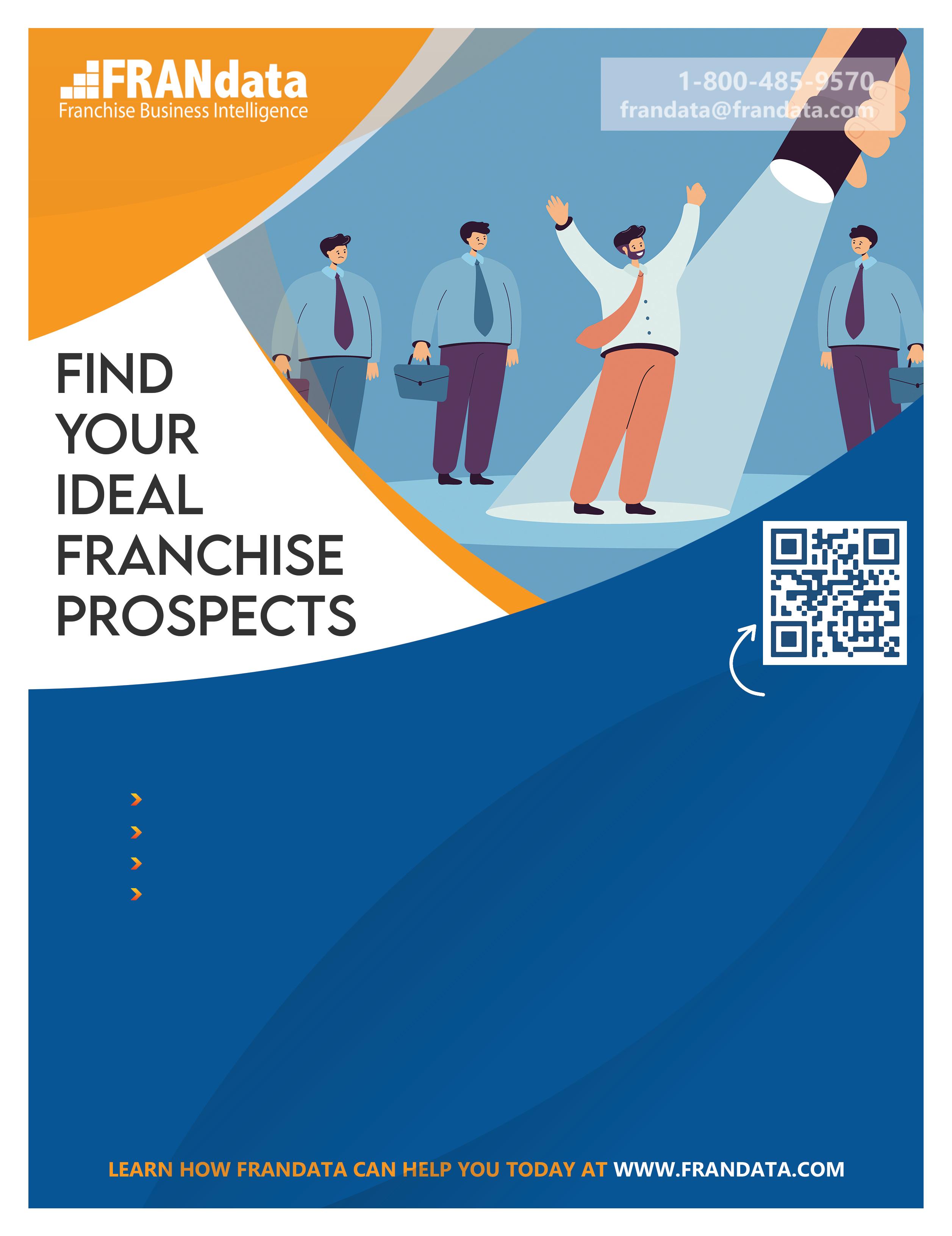


Written by PAUL WILBUR
For a variety of reasons, new recruitment is down for most brands. According to the Annual Franchise Development Report (AFDR), the cost per lead is approaching $300. In response, innovative franchisors are targeting existing multi-unit and multi-brand operators. Existing franchisees provide a database to work from, which is better than waiting for good prospects to come to them. But the strategy for being successful with these sophisticated operators is different from dealing with new franchisees.
Multi-unit operators and especially multiunit, multi-brand operators (MUMBOs) can be crucial for the rapid expansion of your system. These operators possess the infrastructure and experience necessary to scale efficiently and effectively. Brands like Crumbl and 7 Brew Drive-thru Coffee achieved 100 operating units within three years, showing the benefits of aligning with capable franchisees.
A number of successful franchisees aren’t sticking within familiar industries. Many are diversifying, owning operations across food, healthcare, automotive, and retail services. For example, a Dunkin’ franchisee might own coffee shops as well as healthcare centers and schools, reflecting a sophisticated and diversified business model. A practice usually reserved for large investment groups is becoming common among franchisees with large or small portfolios.
The 2023 data on franchise growth underscores how size matters. Brands with more than 100 units average 40 openings annually while the highest performers, such as The Joint
and Unleashed Brands, open more than 110 units each year. This trend highlights the importance of speed in capturing market share before competitors emerge. Service brands selling territories may grow faster than those needing physical sites, putting pressure on companies to act swiftly.
Additionally, 4,635 franchise agreements have been signed but the businesses have not yet opened. This backlog creates opportunities for franchisors to develop innovative ways to attract and onboard franchisees capable of sustainable scaling.
Recruiting from among these franchisees requires a different approach than from single-unit or single-brand franchisees. Successful franchisors increasingly shift to direct outreach strategies, using personalized communication to connect with franchisees from other systems. The goal is to understand franchisees’ challenges and provide tailored solutions, using buzzwords like “low inventory” to capture attention. Access to email, phone, and LinkedIn helps to overcome the challenge of connecting with operators who are not always in the store.
Franchise sales teams must adapt their messaging based on franchisee size. A onesize-fits-all approach will not be successful. Smaller operators need different strategies than large-scale owners, who manage multiple brands and often move between industries. Building meaningful relationships and sharing relevant market insights help franchisors position themselves as trusted partners.
These franchisees are looking for more than just a good brand story. Sales teams need to provide much more data about their system and about the market than they would for more traditional franchisees. Franchisors must ensure they have the necessary infrastructure, such as credit reports and validation tools, to support growth objectives. They need to show that they are making technology investments, creating comprehensive marketing programs, and building good vendor partnerships.
The development cycle is also different. Despite impressive growth, many franchise development efforts experience slow starts or delays. Companies like The Joint have seen strong results in later quarters, emphasizing the need for persistence and planning. Franchise development teams are also seeing increased interest from financial firms and private equity, which traditionally had less involvement in franchising. These investors now offer capital directly to franchisees, eliminating intermediaries, accelerating growth, and reducing complexity.
The new franchise development pipeline requires targeting sophisticated operators, leveraging industry insights, and using strategic outreach to build lasting relationships. It’s important to have good data, a thoughtful approach, and support from the system. In the ever-evolving franchising world, those who master these strategies will lead the way toward exponential growth.
As COO of FRANdata, Paul Wilbur is instrumental in building the research and consulting framework at FRANdata. He plays an integral role in the strategic development of FRANdata’s suite of franchise solutions. Nearly a 20-year veteran at the company, he is the franchise business model expert and plays a key role in fostering strategic advisory relationships with some of FRANdata’s biggest clients.
Written by KEITH GERSON
Franchisors! If you’re not thinking like a private equity (PE) firm, you’re leaving money on the table. Seriously. PE guys have cracked the code on identifying untapped potential. Let’s use their playbook to skyrocket your franchise’s valwue.
Private equity firms aren’t just looking at your balance sheet. They’re searching for hidden gems, opportunities for explosive growth. It’s time to take a hard look at your franchise.
Let’s talk unit economics, the bread and butter of scalable growth, folks. Start by identifying your rock-star franchisees. What makes them tick? Figure it out and spread that magic across your network. Then, focus on boosting average unit volumes. Maybe it’s time to shake up your menu or get creative with pricing. And trim the fat without sacrificing quality. Your customers shouldn’t notice. Got underperforming units? Don’t sweep them under the rug. Show investors you’ve got a solid plan to turn them around. That gets PE firms excited.
PE firms are all about that hockey stick growth curve. To show them you’re ready to hit the ice, start by speeding up your franchise sales process. Time is money, people! Get scientific about site selection: Use data to pick winners. While you’re at it, build a killer pipeline of franchisees. Pro tip: Look at your rock-star managers. They could be your next franchise owners. Think big with area development deals or master franchising. In the PE world, go big or go home.
Diversify
One-trick ponies don’t cut it. PE is looking for a business with multiple, growing income sources. Are you too dependent on franchise fees? Get creative. Could you develop your own products? Set up a supply chain business? Ever thought about vertical integration? It’s about controlling more of your business. Give it a shot. If you’re not killing it online, you’re missing
out. Digital is where it’s at, folks. Don’t get left behind in the brick-and-mortar Stone Age.
Your brand is your secret sauce. Make it so irresistible that customers—and investors— can’t get enough. Start with a brand audit, and don’t sugarcoat it. What’s your story? If it doesn’t give you goosebumps, it’s back to the drawing board. Once you’ve nailed that, pour fuel on your marketing fire. Make sure it’s actually moving the needle, not just making pretty pictures. Don’t be a lone wolf: Strategic partnerships can take you places you never dreamed of. Think big, think bold, and watch your brand soar.
Scalable infrastructure
PE firms want to see a business that can grow without the overhead exploding. Tech it up, baby! You need robust franchise management software. It’ll help you juggle operations, sales, and royalties while keeping everyone in the loop. Soup up your POS systems and your tech stack, dive into data analytics, and get your head in the cloud (computing, that is). Standardize everything: from how you onboard franchisees to how you flip burgers. Use software to keep everyone on the same page.
Build a team that knows how to scale. Make sure they can navigate your tech stack like pros. Embrace your inner data nerd. Use fancy reports from your software to make smart decisions. And always keep your tech fresh. When PE firms see your tech-savvy, streamlined operation, they’ll fall over themselves to throw money at you.
Legal docs are about as exciting as watching paint dry. But hear me out: Your franchise agreement could be holding you back. Ditch overly restrictive clauses. Make your FDD sing, especially Item 19, your chance to show off juicy financials. Consider a tiered royalty structure. Reward highfliers and motivate
the rest. It’s amazing how much value can be unlocked by tweaking the fine print.
Want to really get PE firms excited? Show them you can take over the world. Figure out which international markets are ripe. Have a solid game plan for going global. Who will be your trusted allies? Reach out to IFA suppliers to help with strategy, supply chain, and more. Don’t shy away from the tough stuff. How will you handle supply chain issues or menu tweaks for local tastes? Consider dipping your toe into international waters with a pilot or two. Nothing speaks louder than results, especially when they come with a passport.
Show them you’re not resting on your laurels. Create a system for capturing great ideas from your team and franchisees. You never know where the next big thing will come from. Always test new products, new services, and new ways of doing things. Keep your finger on the pulse of emerging tech. Be the disruptor, not the disrupted. Hey, consider setting up an innovation lab. It’s like R&D but cooler. Show PE firms you’re blazing a trail into tomorrow.
It’s time to put these principles into action. You’re building a lean, mean, growth machine. Take a good, hard look at your franchise. Where are you crushing it? What could use some work? Then get to it. Trust me: When you see revenue and profit numbers climb, you’ll be glad you did.
Make these principles part of your DNA. Keep pushing, keep improving, keep growing. Before you know it, you’ll have PE firms knocking down your door—checkbooks in hand.
Why wait? Show the world what your franchise can do!
Keith Gerson, CFE, is president and CEO of Gerson Advisory Services.
March 25-28th, 2025
Caesars Forum, Las Vegas, NV

Franchise Customer Experience Conference
June 24-24th, 2025
InterContinental, Atlanta, GA

Franchise Leadership & Development Conference
October 7–9th, 2025
InterContinental, Atlanta, GA
Top-quality candidates want to know about brand strength, growth potential, investment and ongoing costs, training and support for international markets, and how adaptable the brand is to local customs.
Finding the right fit with international franchisees
Written by WILLIAM EDWARDS AND ALISON MCELROY
Expanding your franchise internationally is an exciting growth opportunity, but it also presents challenges, like cultural differences, language barriers, and varying business practices. One of the most critical steps in global expansion is finding qualified franchisees and building strong relationships with them from the start. The success of your franchise in a new country largely depends on whom you choose to represent your brand.
When your business enters a new country, the franchisee becomes the face of your brand, adapting it to local tastes and driving market development. Selecting the right partner is as crucial as having a solid business model. A strong partnership with the right franchisee is a key asset for a smooth and successful market entry as well as growth of units and the resulting fees and royalties over time.
Many brands start their international expansion reactively, responding to the first inbound lead rather than taking a strategic approach. While it may be tempting to jump at early opportunities, this often leads to mismatched partners and underperforming markets, and that means lower fees and royalties over time. Our experience shows that successful international franchising requires a thoughtful strategy that carefully selects partners aligned with the brand’s goals, resources, and cultural fit.
To ensure you’re targeting the right candidates, define the profile of your ideal international licensee. Look for franchisees who have the financial capacity and infrastructure to open multiple locations and understand your business, and they should be committed to your brand values.
Key characteristics of a strong international franchisee include:
• Passion for your brand. Ideal franchisees are financially capable and genuinely enthusiastic about your business. They understand your product or service and are motivated to bring it to a new market. Their passion for the brand will help when there are challenges over time.
• Business acumen. A successful business background is crucial to navigating the complexities of running a franchise in a new market.
• Strong reputation. Your franchisee should have a solid local reputation and network to help build your brand. They become your brand in their country.
• Experienced management. They should have, or be able to build, a skilled management team to execute your business model. They should have senior staff members who speak English so that they can interface successfully with your staff.
• Real estate access. Finding prime locations is vital for success, and the franchisee should have access to suitable properties.
• Marketing orientation. Franchisees must understand local marketing trends and be capable of launching successful campaigns.
• Sufficient capital. Expanding into new countries requires significant financial resources. The franchisee must have the funds to support both the start-up and long-term growth of your brand—not just the initial country franchise fee.
Finding the right international franchisees requires a strategic approach. Many countries lack the franchise ecosystems that exist in the U.S., so it’s essential to adapt your domestic strategy to the realities of your target international markets. Here are some effective ways to locate potential international franchisees:

• Internationalize your website and add a dedicated international franchise section.
• Use consultants with global reach and proven experience.
• Network at franchise and industry events, trade shows, and on franchise trade missions.
• Engage with your vendors and existing franchisees for leads.
• Proactively approach companies in your target countries that fit your franchisee profile.
• For U.S. companies, leverage the U.S. Commercial Service post in your chosen countries.
Evaluating a franchisee’s financial and business qualifications helps ensure a long-term partnership that leads to success. Key elements of the due diligence process include:
• Financial evaluation. Review the candidate’s financial statements to ensure they have the resources to support both initial setup and long-term growth.
• Business plan. The franchisee should submit a detailed plan outlining their strategy for marketing and operating your
brand in the local market, including real estate needs and development timelines.
• Background checks. Verify the candidate’s business history and conduct background checks to assess their reputation. This goes for both the company and the senior executives of the company. A good source of information is the U.S. Office of Foreign Assets Control (ofac.treasury.gov).
• References. Speak with personal and professional references to gauge the candidate’s reliability and work ethic. Where their money comes from is a key measure.
• Confidentiality agreements. Ensure all relevant information has been disclosed in both application and confidentiality documents.
Pro tip: Make sure the financial qualifications of the franchisee are tied directly to the licensing agreement either through personal or business guarantees.
Alongside due diligence, it’s important to provide candidates with clear, transparent information. Both the franchisor and prospective franchisee should evaluate whether they are a good match.
Top-quality candidates want to know about brand strength, growth potential, investment and ongoing costs, training and support for international markets, and how adaptable the brand is to local customs. They also want to know how successful the franchise has been in its home country and other countries.
Today, virtual communication combined with in-person meetings is a best practice for building strong relationships. A comprehensive due diligence process and relationshipfocused approach enable both parties to focus on growing the brand and achieving long-term success. But do not forget the very important visit to the candidate’s country to see their market and current business operations and to meet the people you will be working with.
The most important factor in the success of your brand in a new country is choosing the right local partner. This was a recurring theme in all the interviews we have done with international franchise experts, which will be highlighted in our upcoming book, Brand Global, Own Local: The Art of International Franchising (visit www.brandglobalownlocal.com). Too often, franchisors base their decisions on a candidate’s willingness to pay the franchise fee, rather than conducting thorough, mutual due diligence.
By following these best practices—carefully selecting franchisees, conducting thorough evaluations, and building strong relationships—you can lay a solid foundation for international success. Clear communication, transparency, and ongoing support are key to ensuring your franchisees succeed and remain committed to growing your brand in new markets.
William (Bill) Edwards, CFE, is the CEO of Edwards Global Services (EGS) and a global advisor to international businesses. With five decades of experience, Bill has helped more than 40 companies expand internationally. Contact Bill at +1 949 375 1896 or bedwards@edwardsglobal.com.
Alison (Ali) McElroy, CFE, is the founder of Kaleidoscope Growth Advisors and advises businesses on building strong franchise systems. Contact Ali at +1 612 76 2880 or amcelroy@kaleidoscopegrowth.com.
Written by ART COLEY
As CEO of CGI Franchise, I’ve witnessed firsthand how the landscape for franchise development has shifted dramatically in recent years. We’re living in an era of rapid change and increasing apprehension, presenting unique challenges for franchise brands in attracting and retaining quality candidates.
The world has experienced significant upheavals in short succession: the Covid-19 pandemic, geopolitical tensions, inflation concerns, and the looming impact of artificial intelligence. These events have compressed what used to be longer periods of stability into shorter, more volatile cycles.
My wife and I have been remodeling our home. It is situated in the historic district of Temple, Texas, and it’s seen several facelifts in its almost 100-year history. Before remodeling, I did not notice how dated our home had become. But it’s incredible how much our home has changed with a bit of fresh paint.
Often, we don’t truly see the need for change until we commit and start making changes. In franchise development, we no longer get the luxury of having a good seven to 10 years before we need to “repaint our rooms” or adjust our approach. This rapid pace of change means that franchise brands must be prepared to revisit and adjust their recruitment strategies more frequently than ever before.
These shifts have profound implications for franchise recruitment. It’s going to take more resources and more energy in 2025 to get the same number of signings as in past years. This includes increased budgets, more intensive training, and potentially new team members. With remote work becoming more common and work-life balance a growing priority, candidates are asking different questions and seeking different assurances from potential franchise opportunities. With household incomes not keeping pace with rising costs in education, housing, and healthcare, potential franchisees are closely scrutinizing the financial opportunities presented by franchise brands.
In this volatile environment, I can’t stress enough the critical importance of having a robust, well-defined franchise development process. If a brand leader is reading this article and doesn’t have a defined, documented, and proven process, you are in trouble. A solid process provides stability and adaptability in uncertain times. It allows franchise brands to consistently evaluate and adjust, maintain quality, and adapt efficiently.
financial opportunity your franchise presents with clear ties to your Item 19 disclosures.
• Discovery days. Prepare your leadership team to address AI, remote work, and potential regulatory changes during candidate interactions.
• Onboarding. Consider how you can incorporate flexible, remote options into your training and onboarding processes. Faster ramp-ups with unit sales and profitability are huge.
While these necessary adaptations may seem daunting, I see opportunities for brands to get it right. The brands that get this right are going to win. By leveraging a strong process and adapting to the current landscape, franchise brands can differentiate themselves and attract high-quality candidates even in uncertain times.
Moreover, brands that push against downturns by investing in their processes and adapting their approaches often emerge stronger than before the troubles. The key is having the right tools and mindset to navigate challenges. In this era of exceptional change, franchise brands will thrive by embracing adaptability while maintaining a strong core process.
While the core structure of your franchise development process may remain constant, I suggest several areas where brands should focus their adaptation efforts:
• Messaging and positioning. Ensure your communication reflects current realities and speaks to candidates’ present concerns. This includes updating website content, email campaigns, and recruitment materials.
• Franchisee testimonials. Leverage current franchisee experiences to show how your brand has adapted to recent challenges and opportunities.
• Appointment setting. Refine how you engage with interested candidates, recognizing that you’re competing for attention in an increasingly noisy digital landscape.
• Financial discussions. Be prepared to have in-depth conversations about the
Remember, you’re not throwing your structure and process overboard. You’re stepping within and saying, “How are we attracting candidates? How are we nurturing them to warm them up so that they will engage and become a candidate in our process?”
By maintaining this balance of stability and flexibility, franchise brands can navigate uncertainty and position themselves for longterm success in franchise development. The future may be uncertain, but with the right process and mindset, it’s full of opportunity.
Let’s go to work!

Art Coley is CEO of CGI Franchise. Using the proven Recruitment Operating System (ROS), Art and the ROS team help franchise companies implement and execute a predictable, repeatable, and sustainable franchisee recruitment program. The company is based in Temple, Texas, and works with brands worldwide. Contact Art at 281-658-9409 or acoley@cgifranchise.com.





